Voices & Visions of 1776
Voices & Visions of 1776 utilizes the arts as a lens to explore historical events of the American Revolution and foster critical thinking about how history is recorded, interpreted, and remembered.
Film Excerpt Screener
The Voices & Visions of 1776 screening reel includes selected excerpts from the series featuring art, music, and literature from the revolutionary era, as well as, examples of the cinematography and filmmaking style used in THE AMERICAN REVOLUTION.
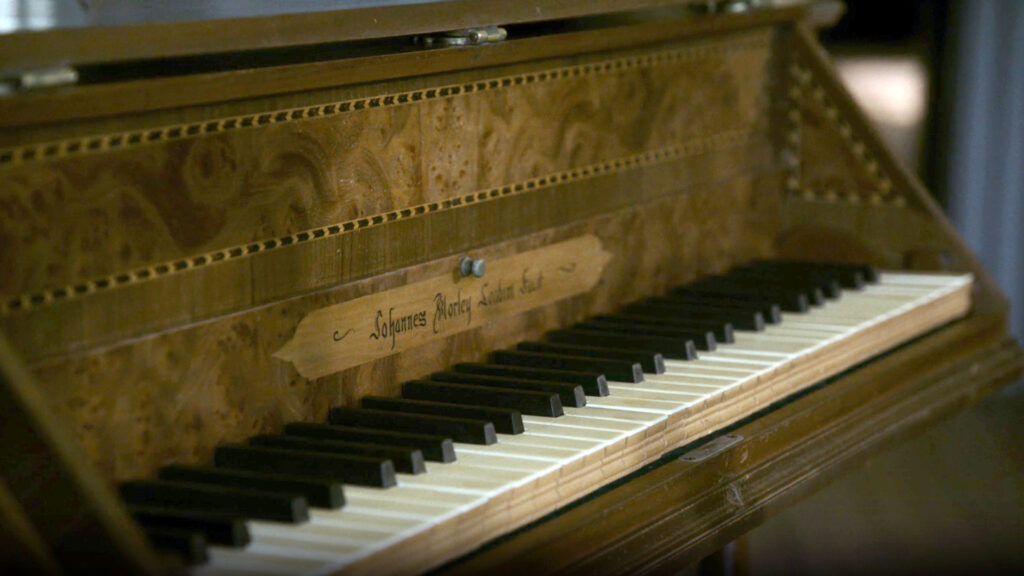
Screening Reel Description
There are two clip reel versions of the Voices & Visions of 1776 to accommodate a variety of engagement activities. The reels include selected excerpts from the series featuring art, music, and literature from the Revolutionary Era.
Discussion Questions
These questions are designed to encourage thoughtful discussion about THE AMERICAN REVOLUTION, especially the influence of art, music, and literature on American culture.
Filmmaker Q&A
Filmmakers Sarah Botstein and David Schmidt discuss the filmmaking process for The American Revolution, what inspired them, what challenged them, and why telling this story is important now.
Reading List
Activity Sheets
Discover history in harmony—download facts about the fife and learn why this small instrument made a big impact.
Playlist
People of the Revolution Gallery
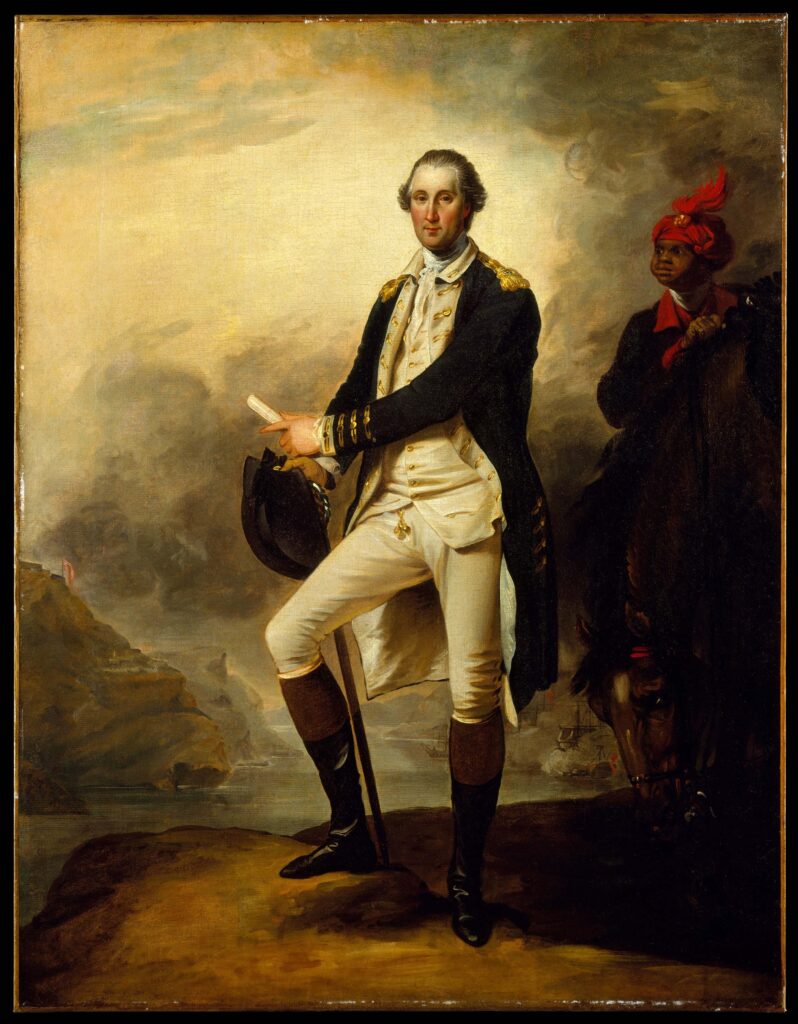
George Washington. Painting by John Trumbull, 1780. Credit: The Metropolitan Museum of Art
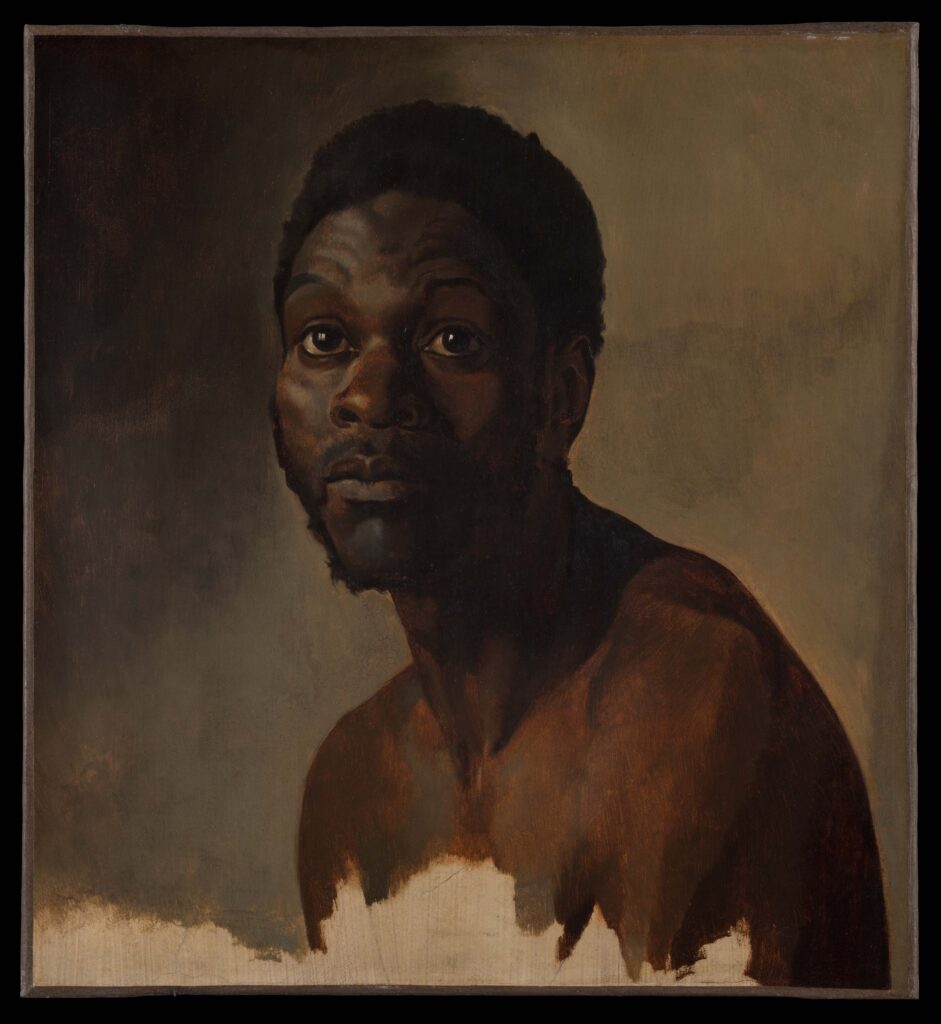
Bust-Length Study of a Man. Painting by François-Auguste Biard, 1848. Credit: The Metropolitan Museum of Art
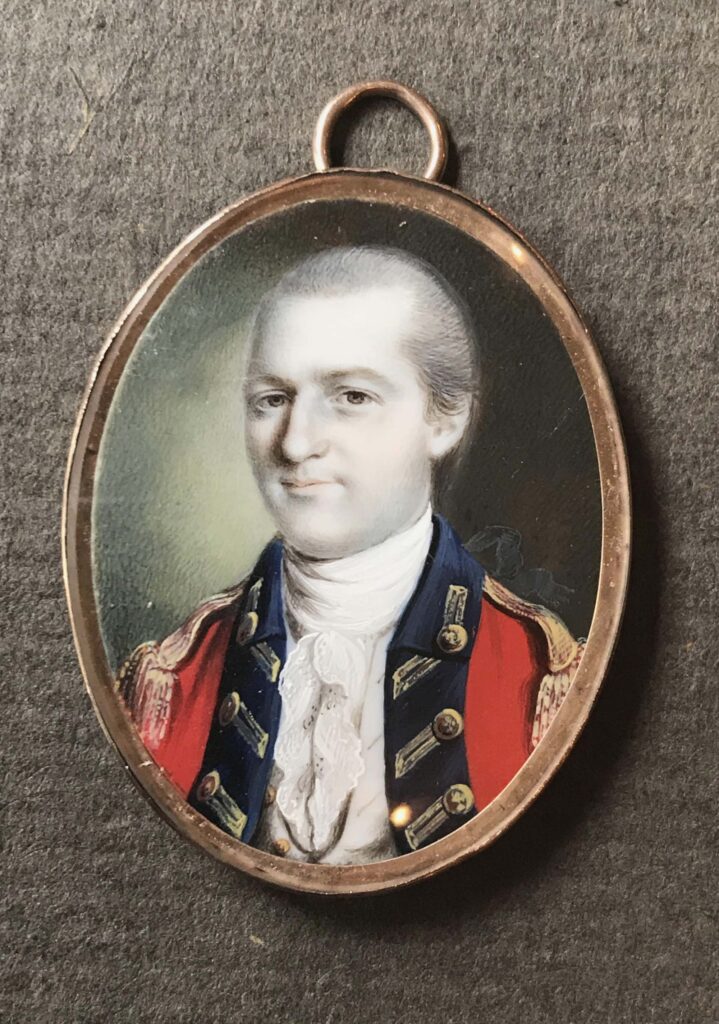
Benedict Arnold. Painting by John Ramage, 1780-1782. Credit: Christopher Bryant
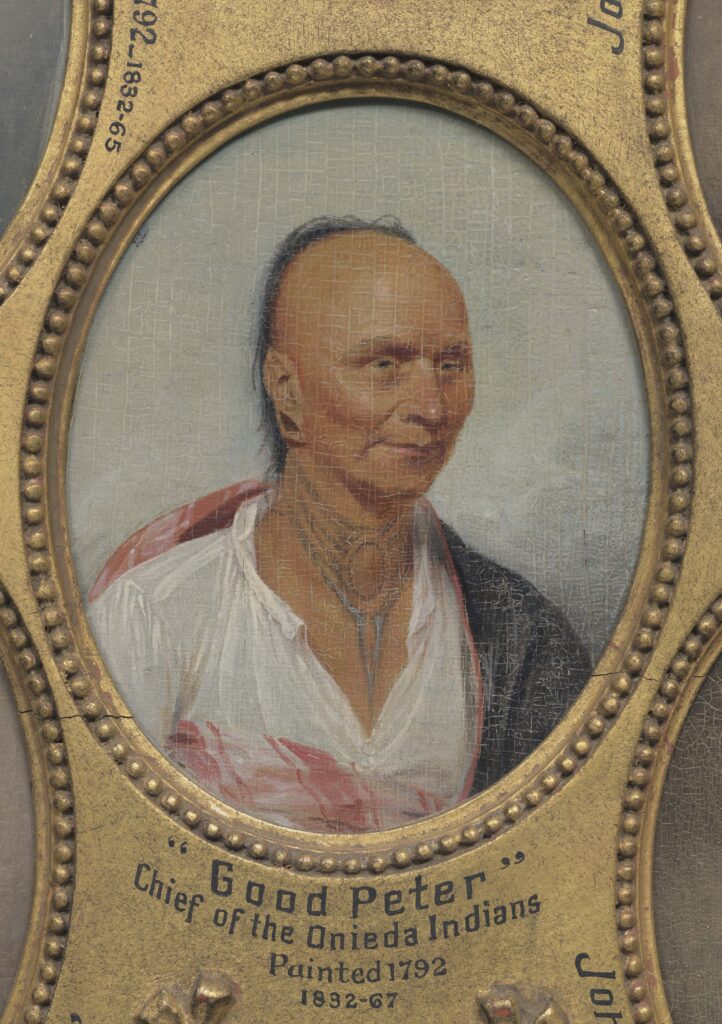
“Good Peter,” Chief of the Oneida Indians. Painting by John Trumbull, 1792. Credit: Yale University Art Gallery
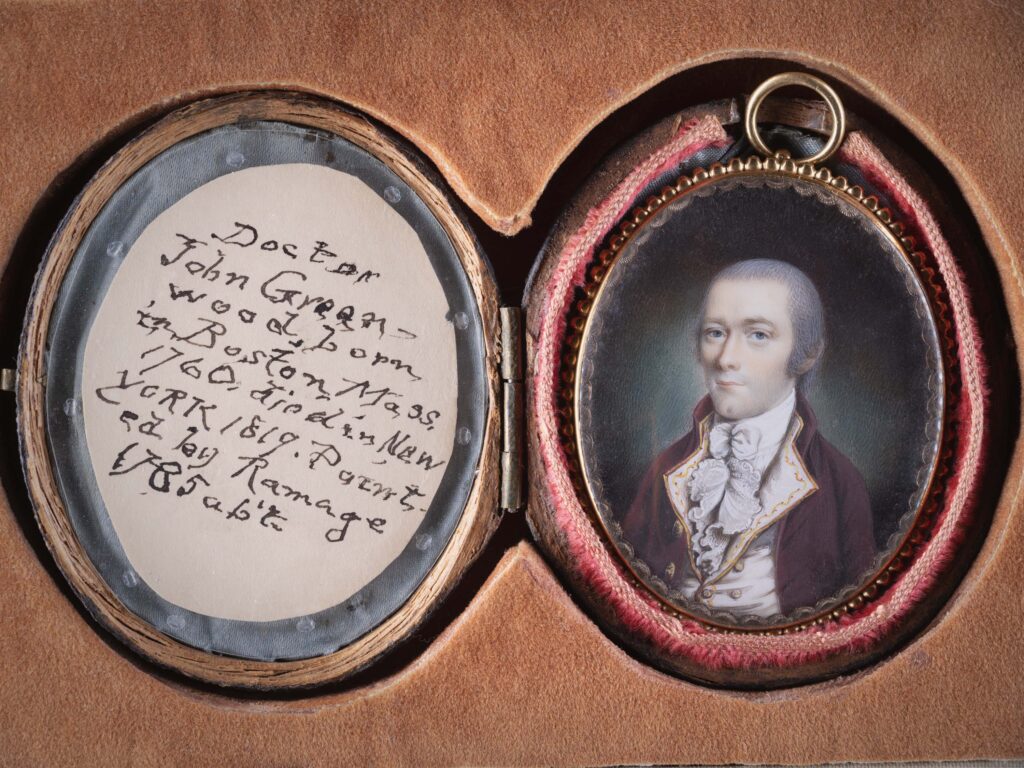
Portrait of John Greenwood. Painting by John Ramage, 1785. Credit: The New York Academy of Medicine Library
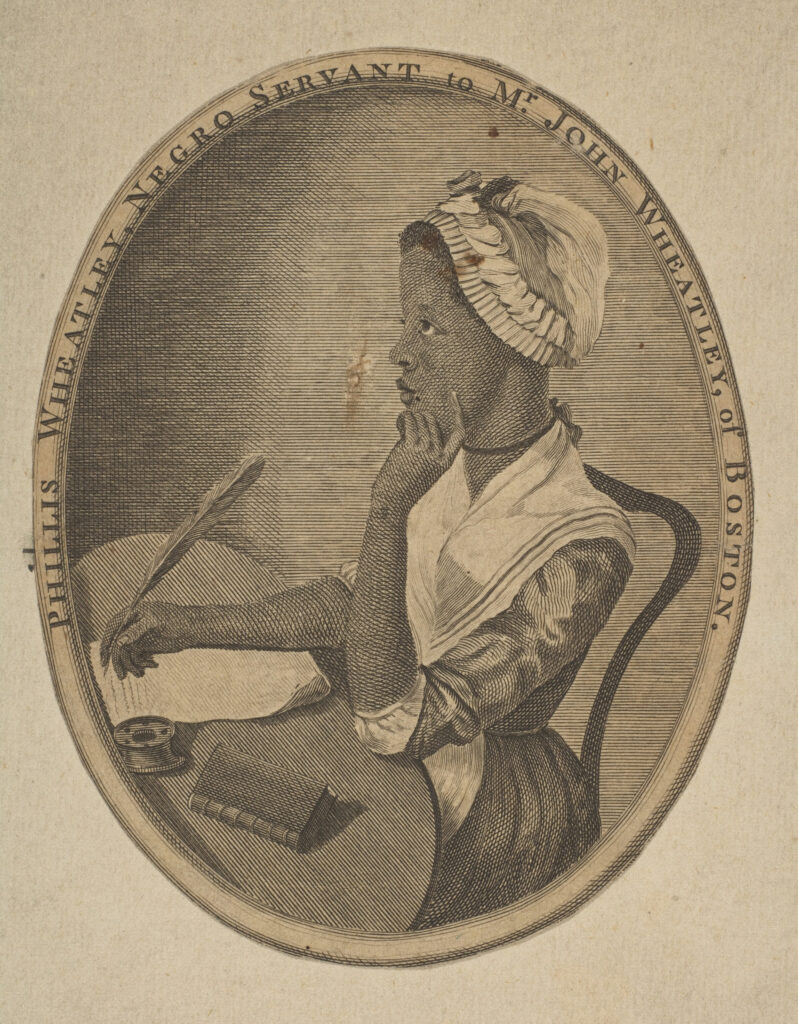
Phillis Wheatley. Attributed to Scipio Moorhead, 1773. Credit: The Metropolitan Museum of Art.
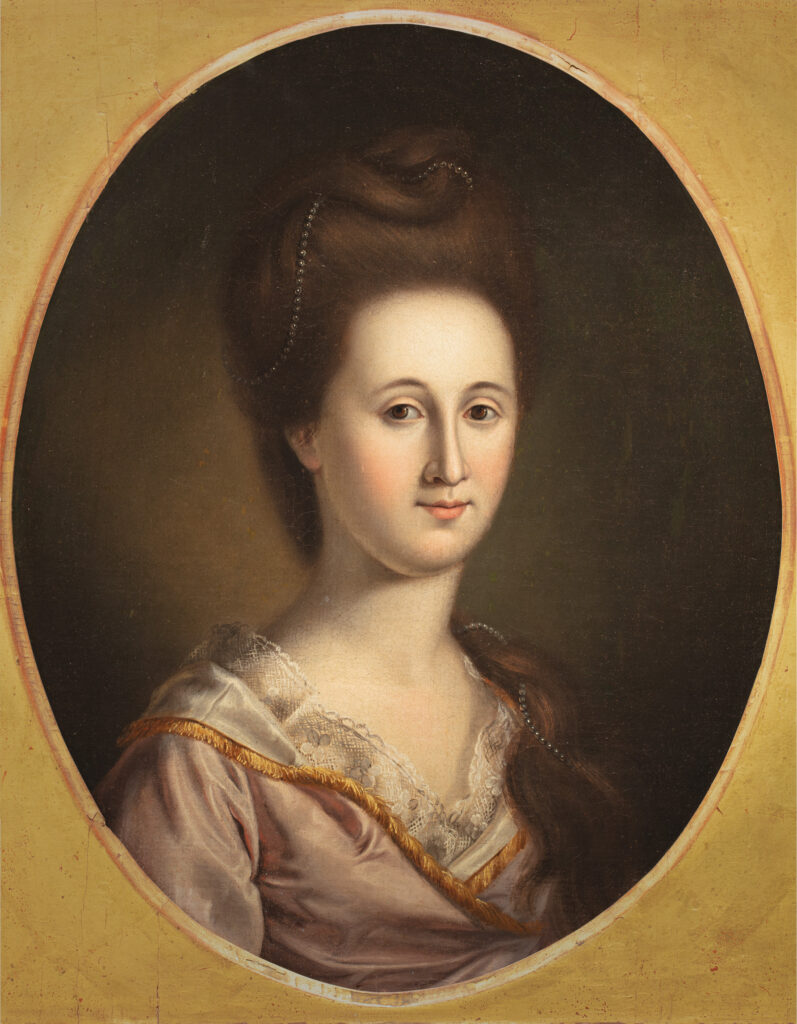
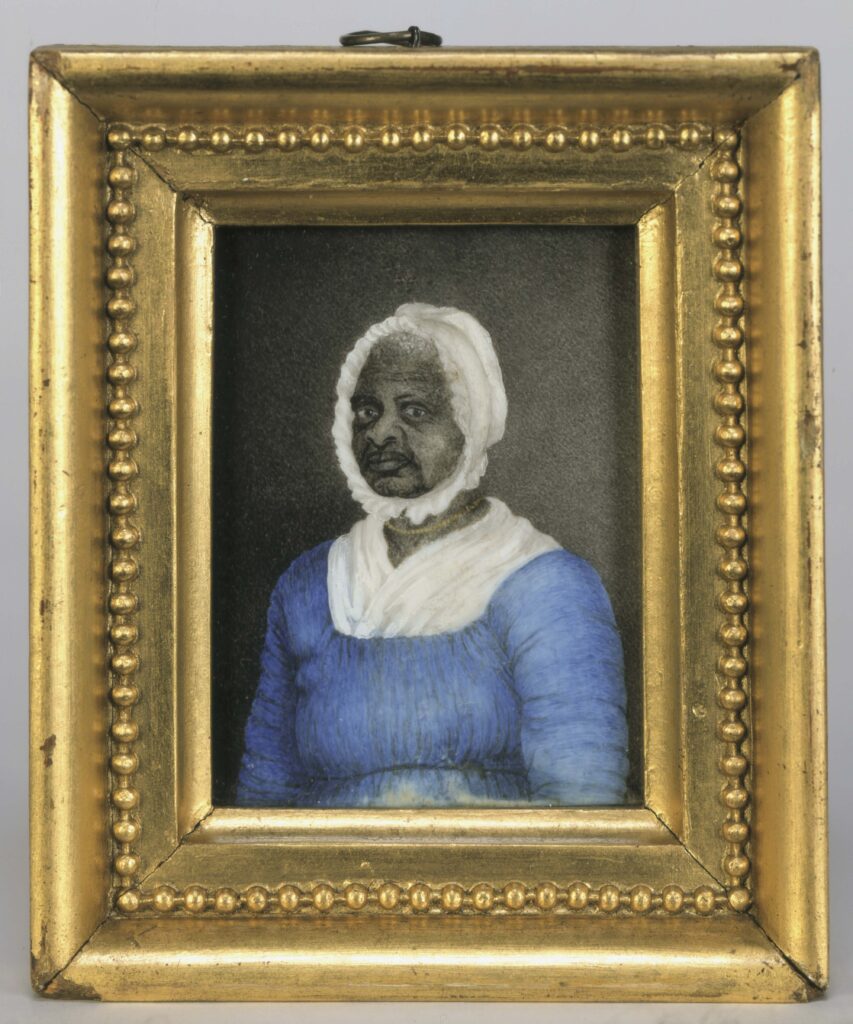
Elizabeth Freeman (“Mumbet”). Painting by Susan Anne Livingston Ridley Sedgwick, 1811. Credit: Collection of the Massachusetts Historical Society
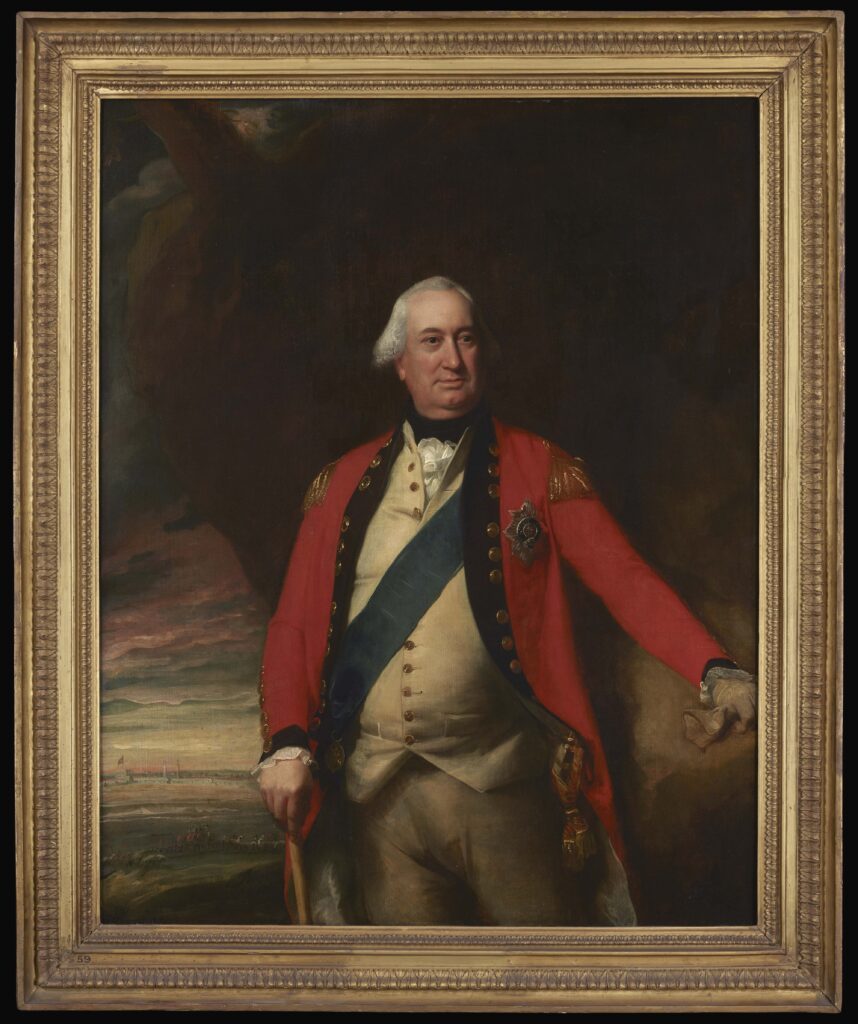
Charles, 2nd Earl and 1st Marquis Cornwallis. Painting by John Singleton Copleys, ca. 1795. Credit: Guildhall Art Gallery, City of London
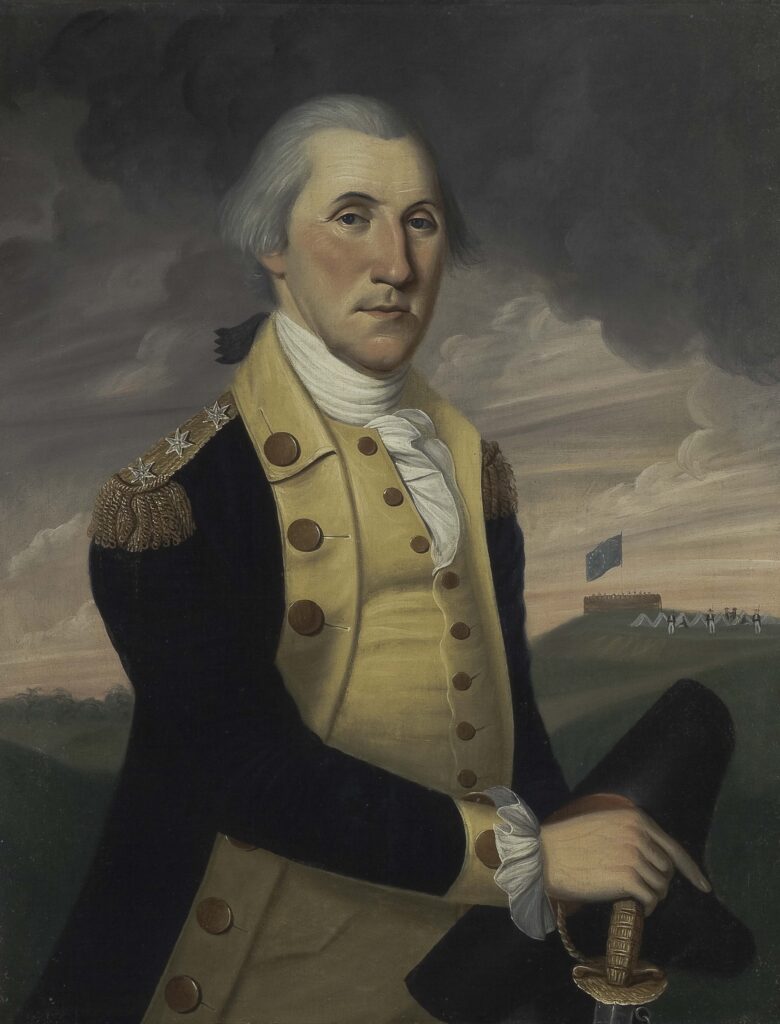
George Washington as Commander-in-Chief of the Continental Army. Painting by Charles Peale Polk, ca. 1787-1793. Credit: Winterthur Museum, Garden & Library
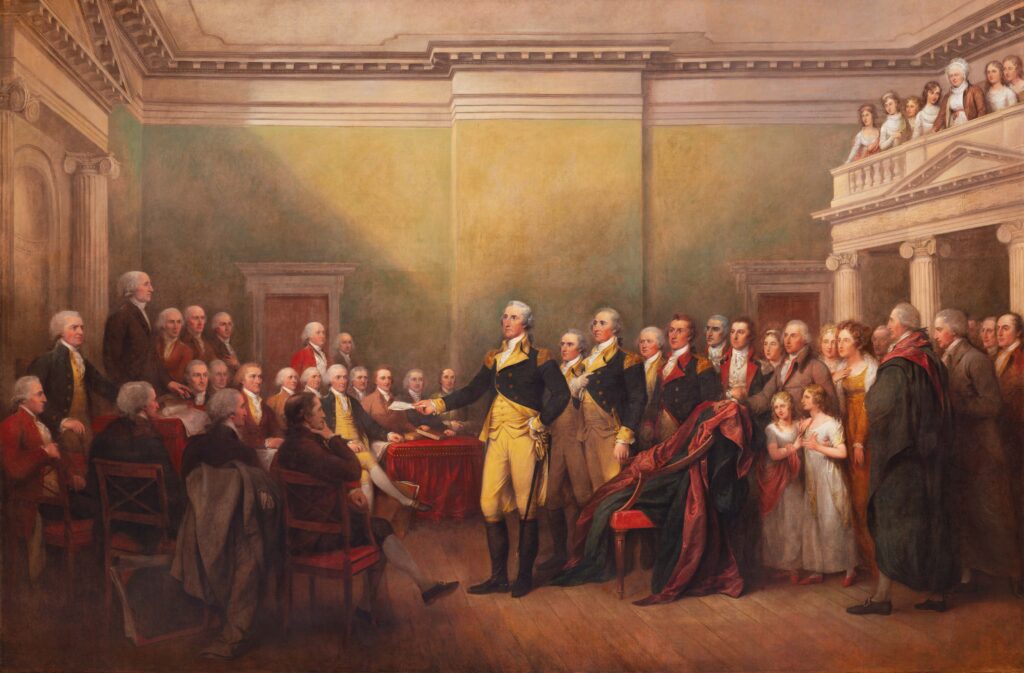
General George Washington Resigning His Commission. Painting by John Trumbull, 1826. Credit: Architect of the Capitol
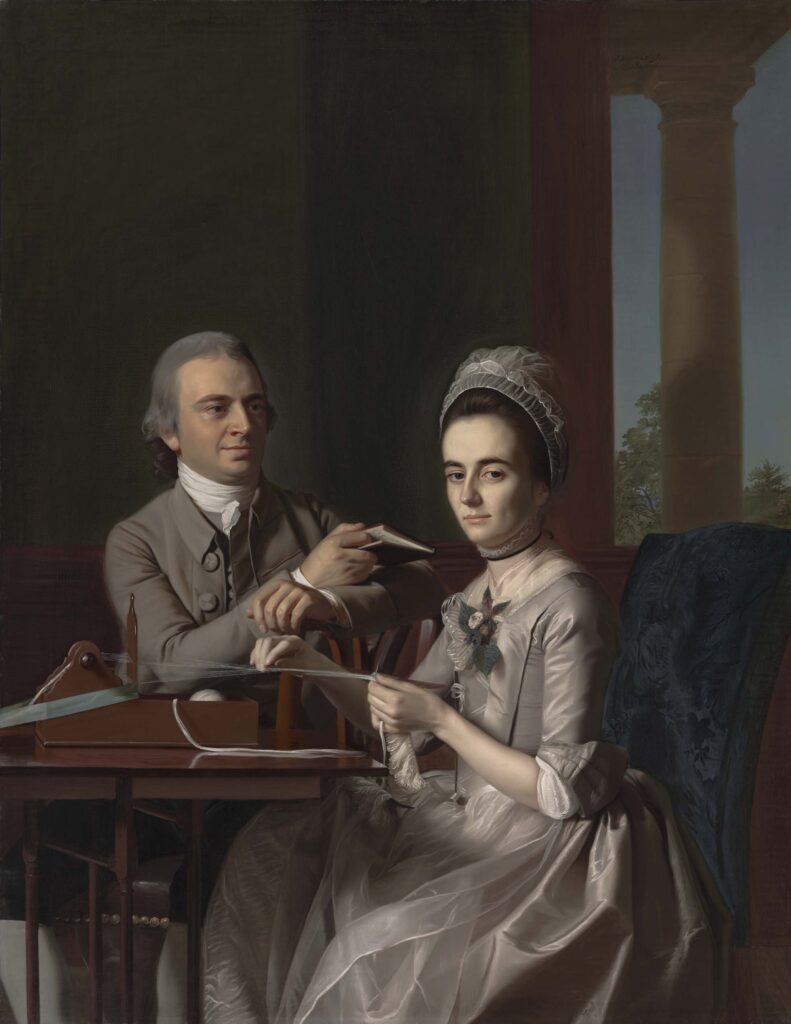
Portrait of Mr. and Mrs. Thomas Mifflin (Sarah Morris). Painting by John Singleton Copley, 1773. Credit: Philadelphia Museum of Art
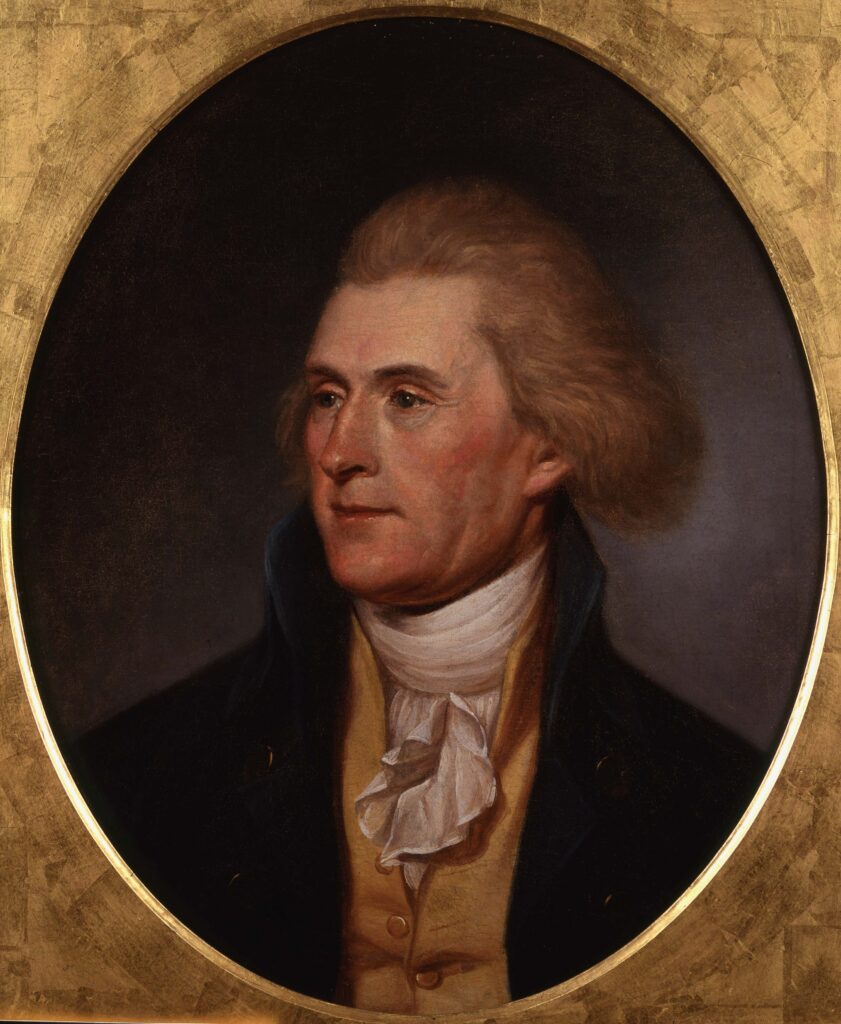
Thomas Jefferson. Painting by Charles Willson Peale, ca. 1791-1792. Credit: Independence National Historical Park, National Park Service
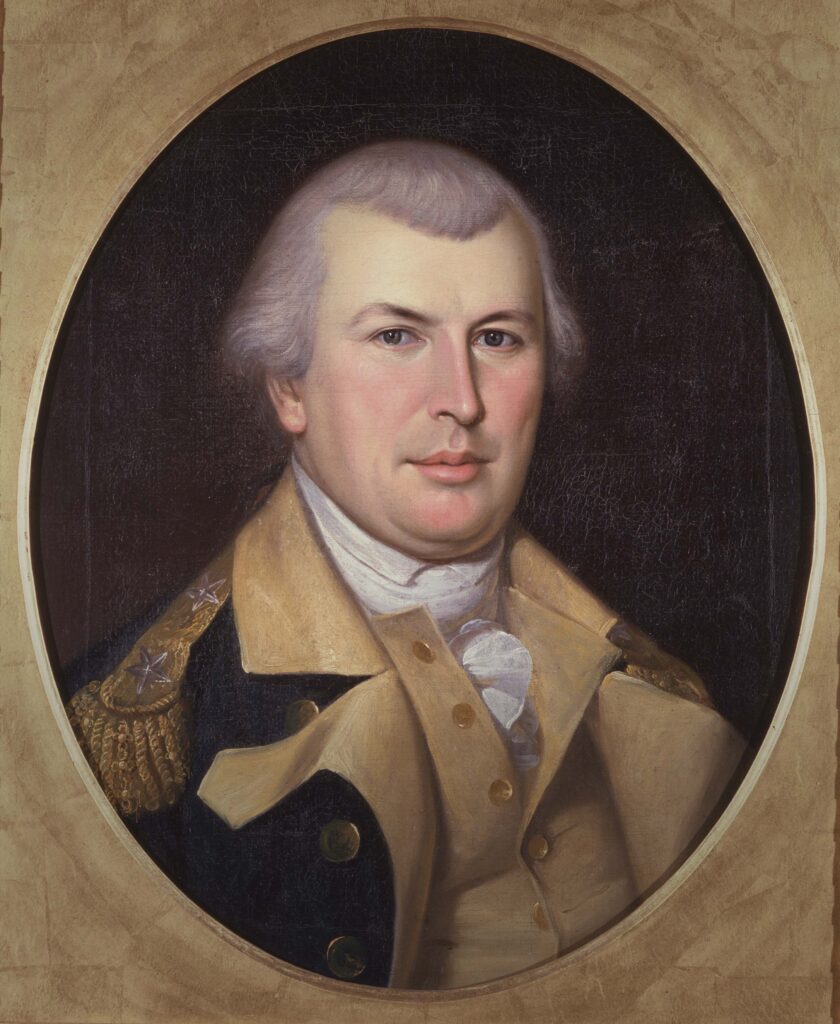
Nathanael Greene. Painting by Charles Willson Peale, 1783. Credit: Independence National Historical Park, National Park Service
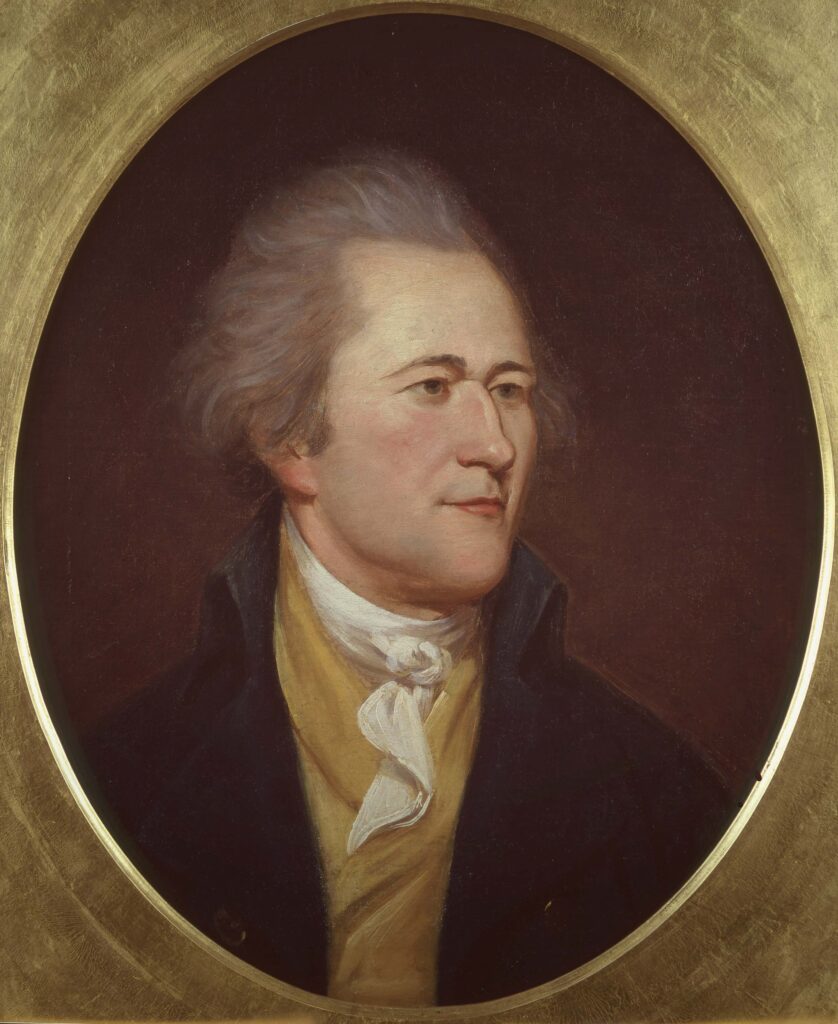
Alexander Hamilton. Painting by Charles Willson Peale, ca. 1790-1795. Credit: Independence National Historical Park, National Park Service
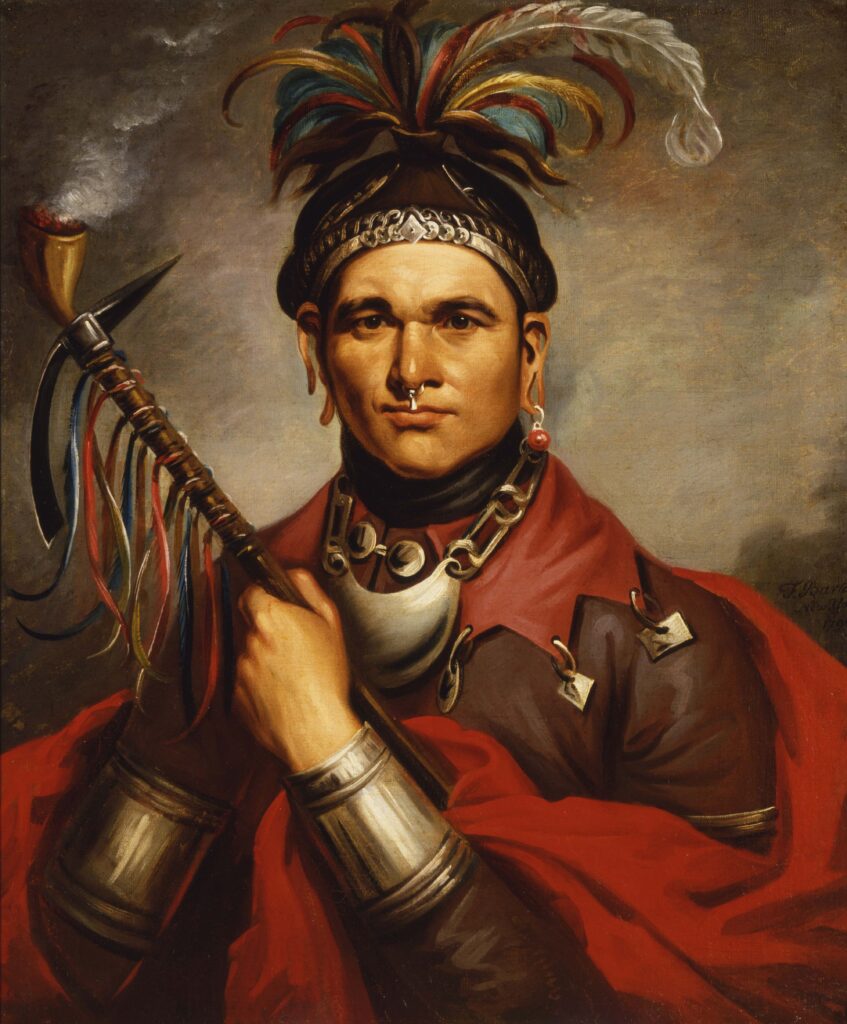
Gayë́twahgehKi On Twog Ky (also known as Cornplanter). Painting by F. Bartoli, 1796. Credit: The New York Historical http://www.nyhistory.org
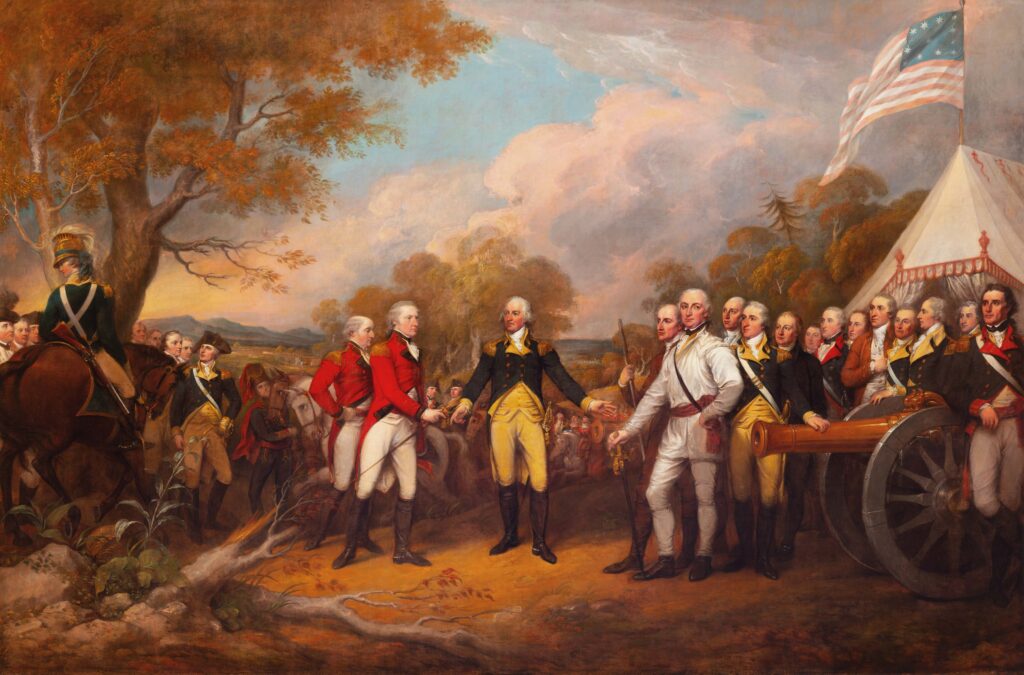
The Surrender of General Burgoyne. Painting by John Trumbull, 1821. Credit: Architect of the Capitol
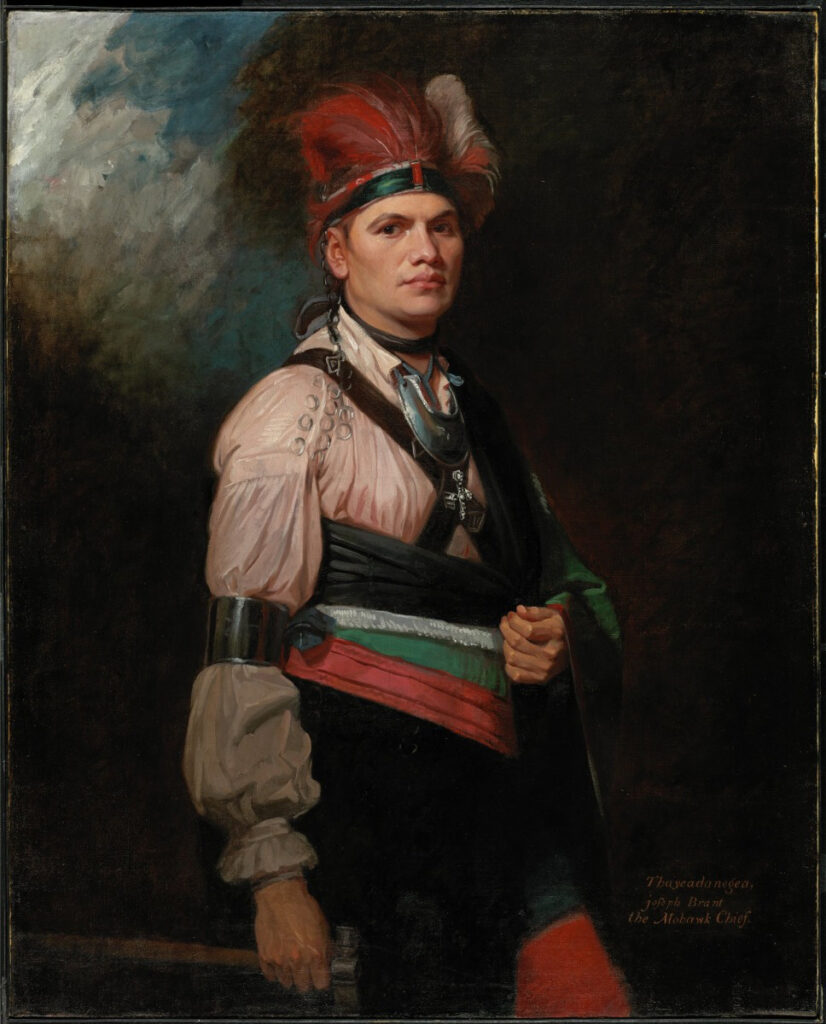
Thayendanegea (Joseph Brant), Chief of the Mohawks. Painting by George Romney, 1776. Credit: National Gallery of Canada, Bridgeman Images.
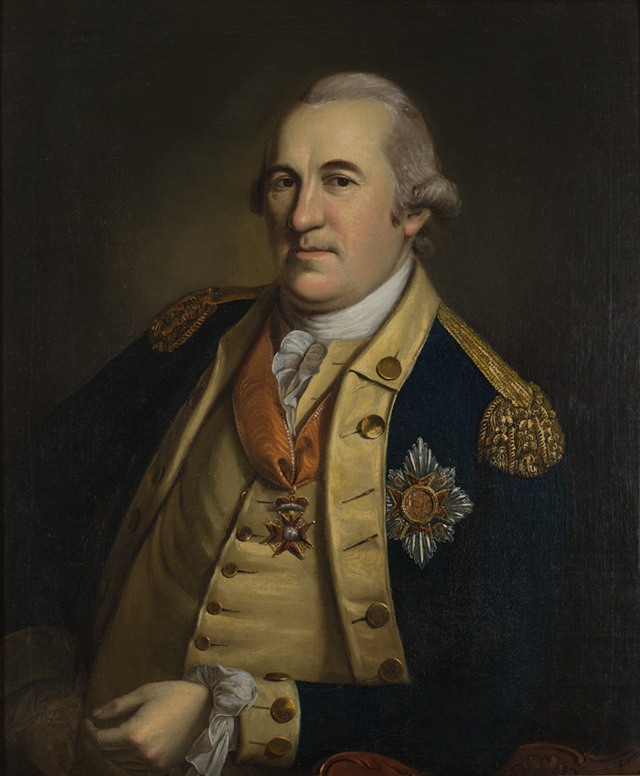
Baron Frederick William von Steuben. Painting by Charles Willson Peale, 1780. Credit: Courtesy of the Pennsylvania Academy of the Fine Arts
Places of the Revolution Gallery
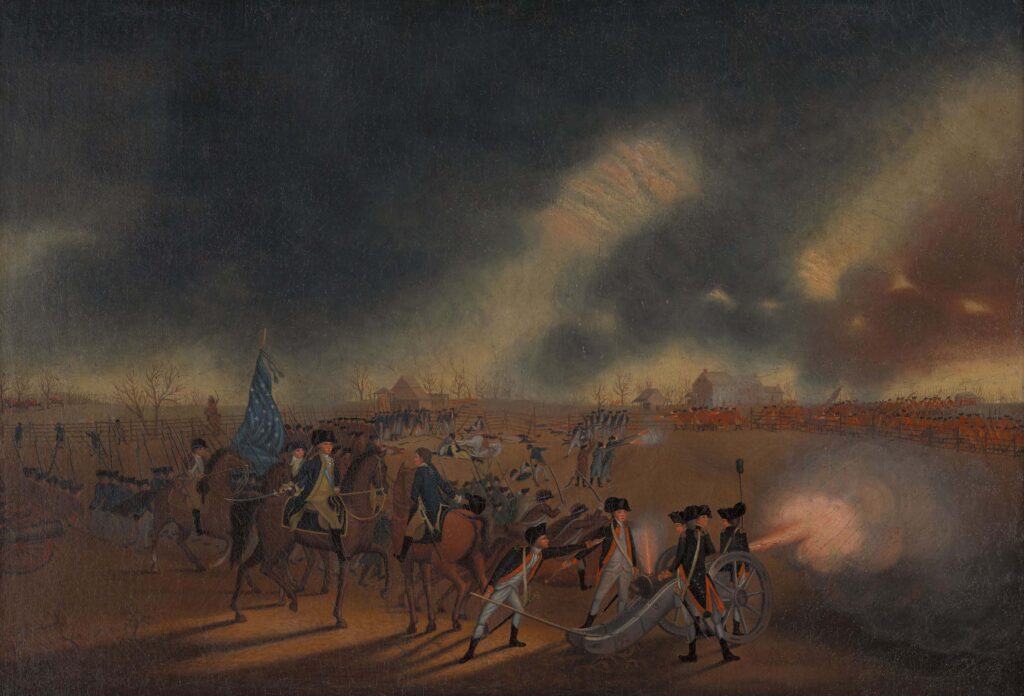
The Battle of Princeton. Painting by James Peale, ca. 1782. Credit: Princeton University Art Museum
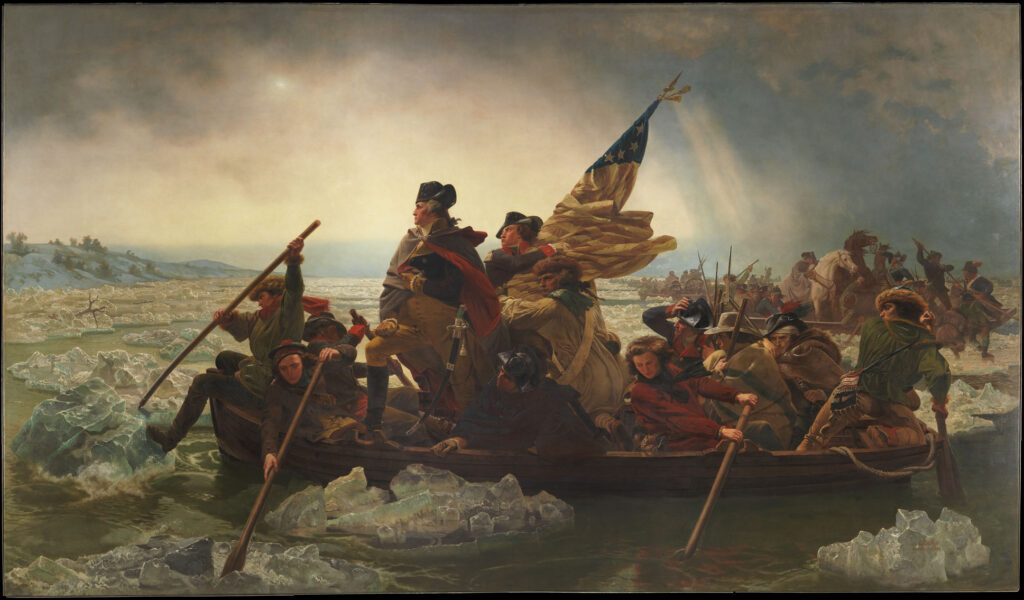
Washington Crossing the Delaware. Painting by Emanuel Leutze, 1851. Credit: The Metropolitan Museum of Art.
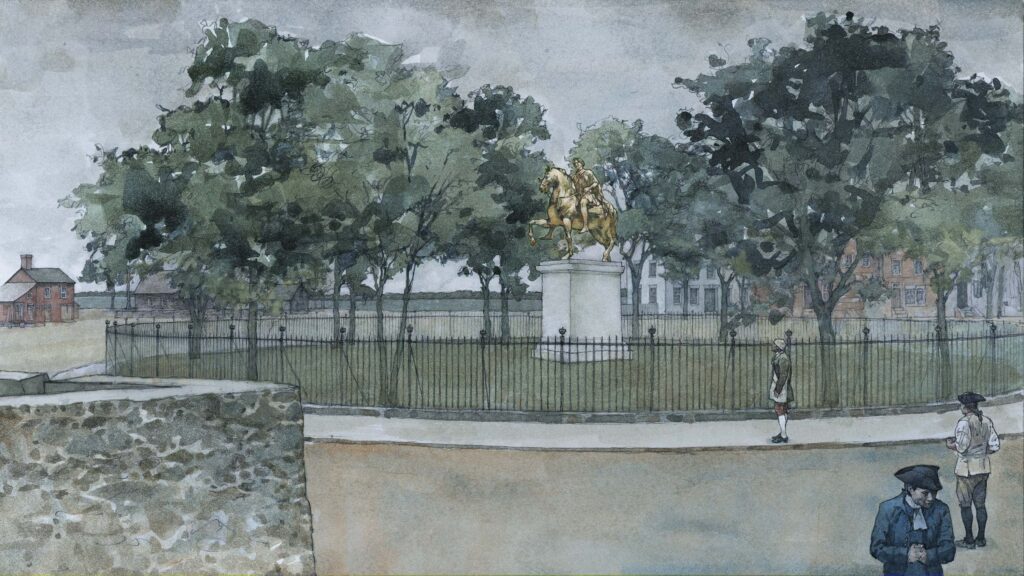
Statue of King George III in Bowling Green, New York City. Illustration by Wood Ronsaville Harlin, 2024. Credit: Original Illustrations created by Greg Harlin – Wood Ronsaville Harlin
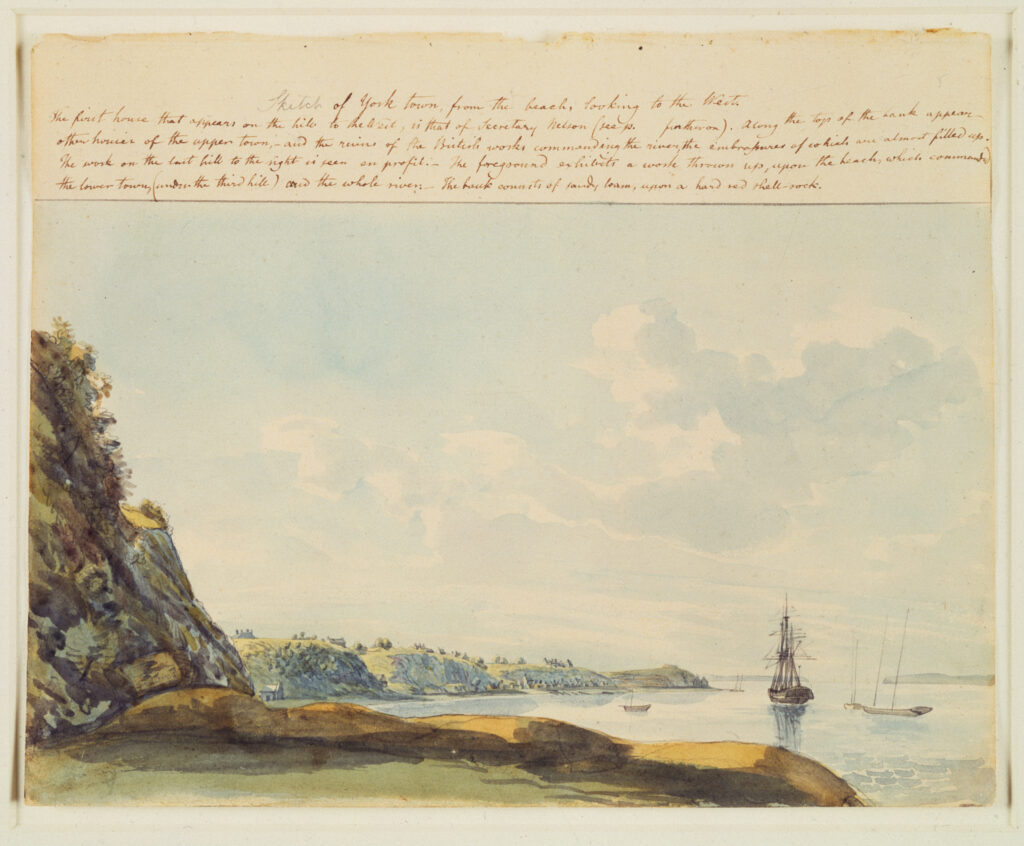
Sketch of Yorktown from the Beach, looking to the west. Watercolor by Benjamin Henry Latrobe, 1798-1807. Credit: Maryland Center for History and Culture

Town and Harbour of Halifax as they appear from the opposite shore called Dartmouth. Painting by Dominic Serres, 1762. Credit: Art Gallery of Nova Scotia

The Death of General Richard Montgomery of the Continental Army in the Attack on Quebec, 1775. Painting by John Trumbull, 1786. Credit: Yale University Art Gallery
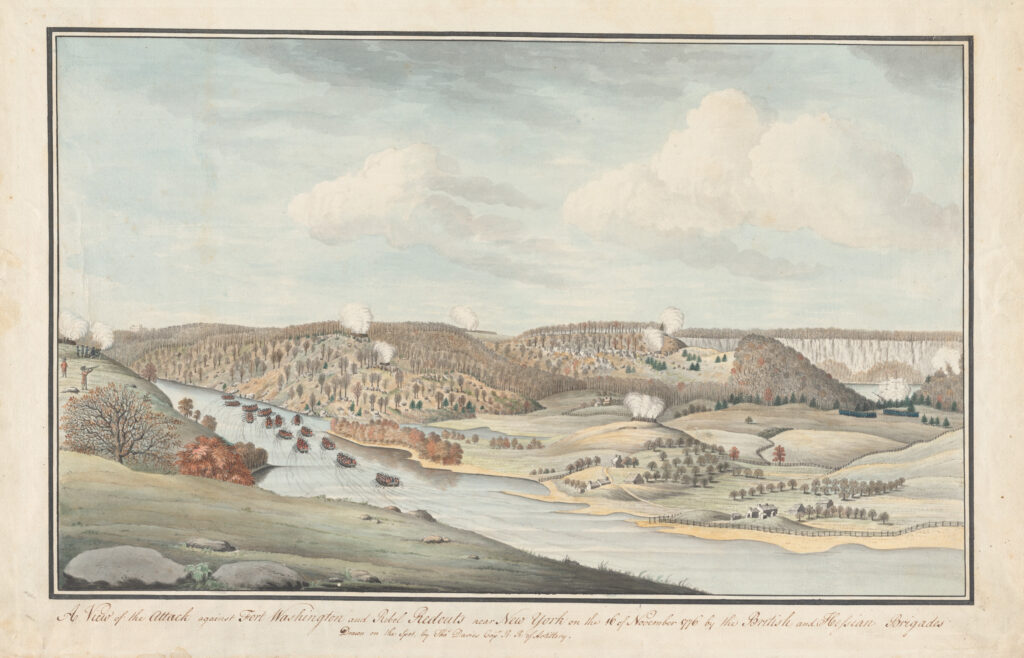
A view of the attack against Fort Washington and rebel redouts near New York on the 16 of November 1776 by the British and Hessian brigades. Drawing by Thomas Davies, ca. 1776-1812. Credit: The New York Public Library
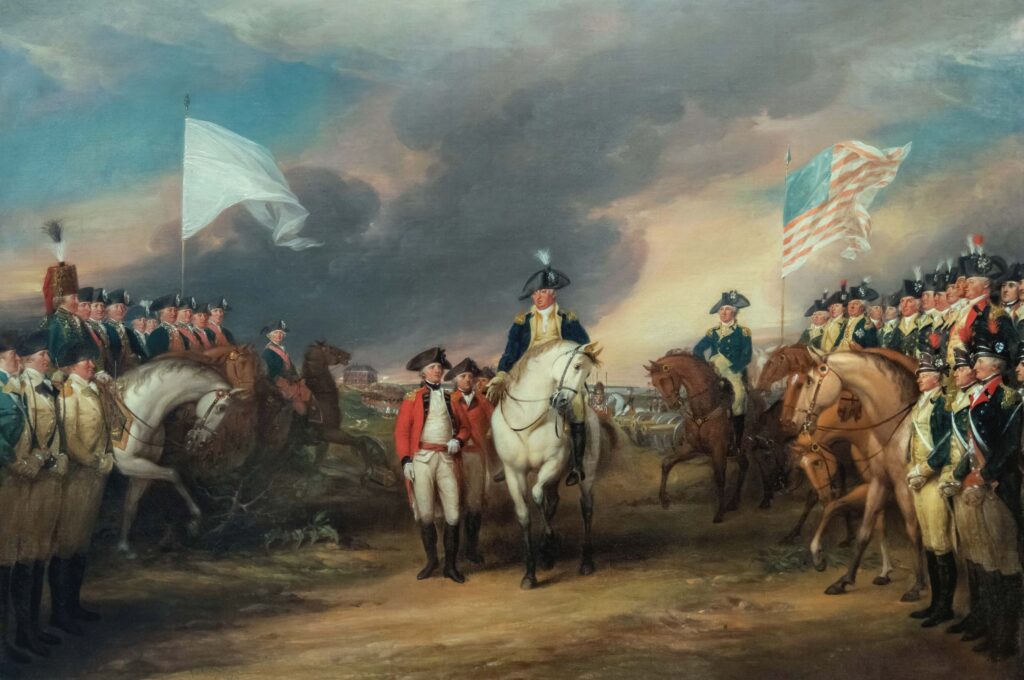
The Surrender of Lord Cornwallis at Yorktown, October 19, 1781. Painting by John Trumbull, ca. 1787-1828. Credit: IanDagnall Computing / Alamy Stock Photo
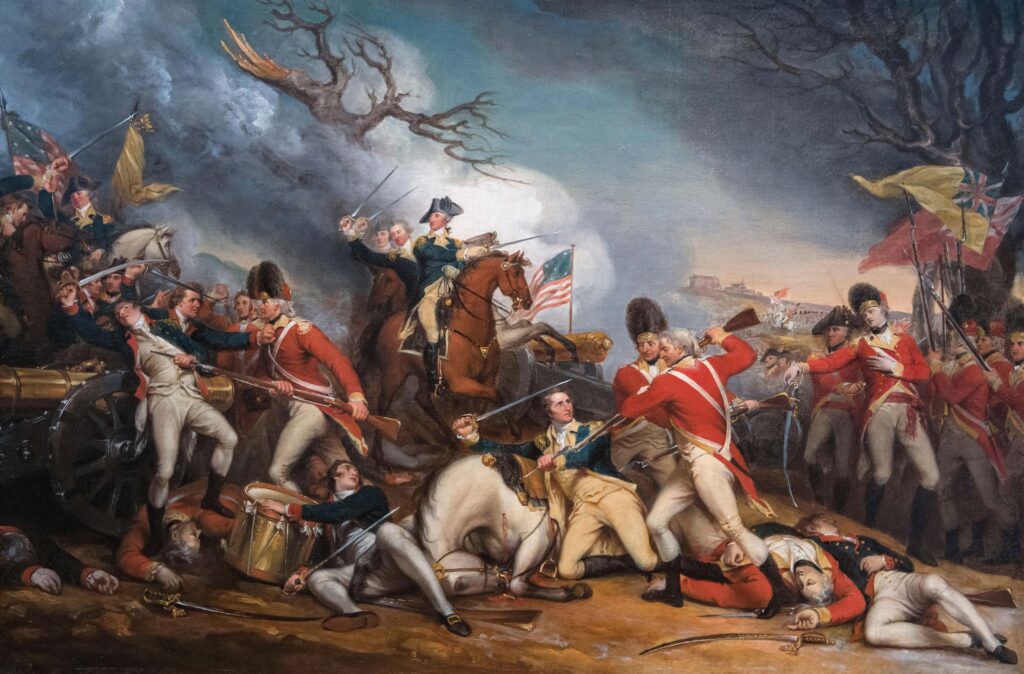
The Death of General Mercer at the Battle of Princeton, January 3, 1777. Painting by John Trumbull, ca. 1789-1831. Credit: Alamy Stock Photo
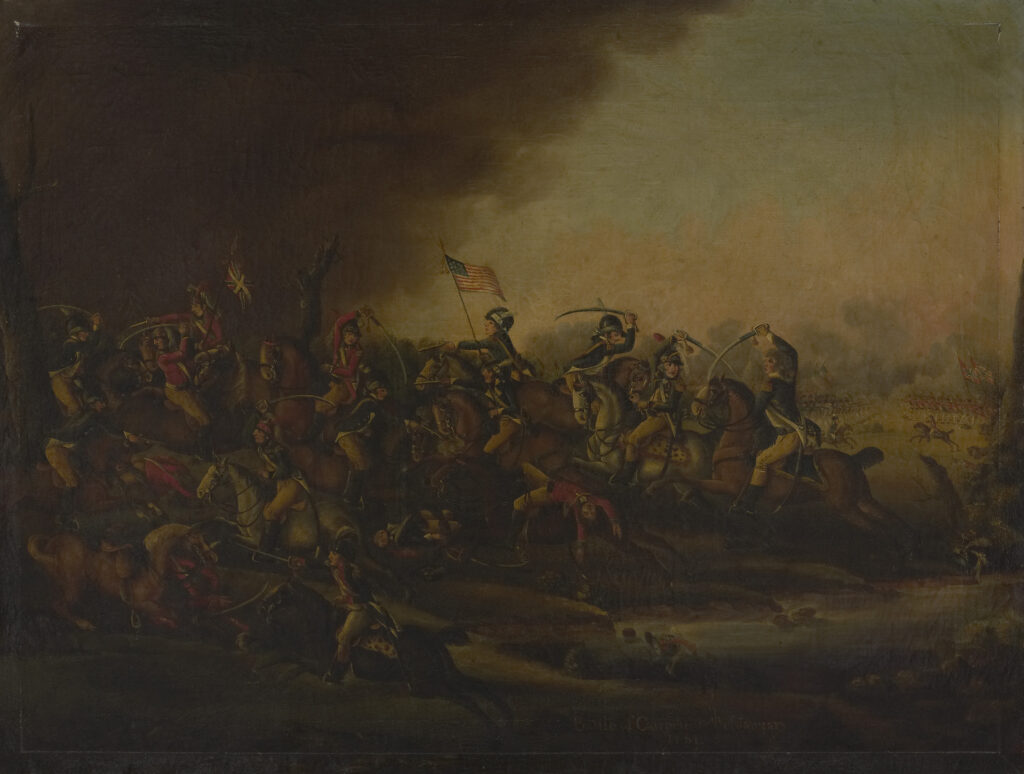
Battle of Cowpens. Painting by Frederick Kemmelmeyer, 1809. Credit: Yale University of Art.

A View of Charles Town. Painting by Thomas Leitch, 1774. Credit: Collection of the Museum of Early Southern Decorative Arts (MESDA)
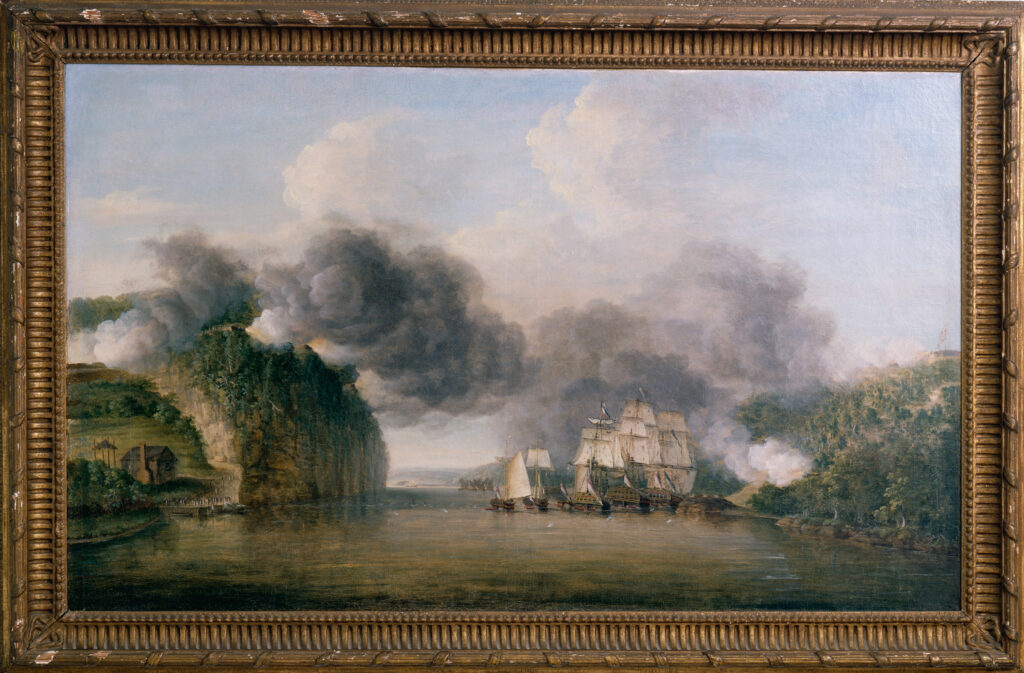
The Forcing of the Hudson River Passage, October 9, 1776. Painting by Dominic Serres, 1779. Credit: Winterthur Museum, Garden & Library
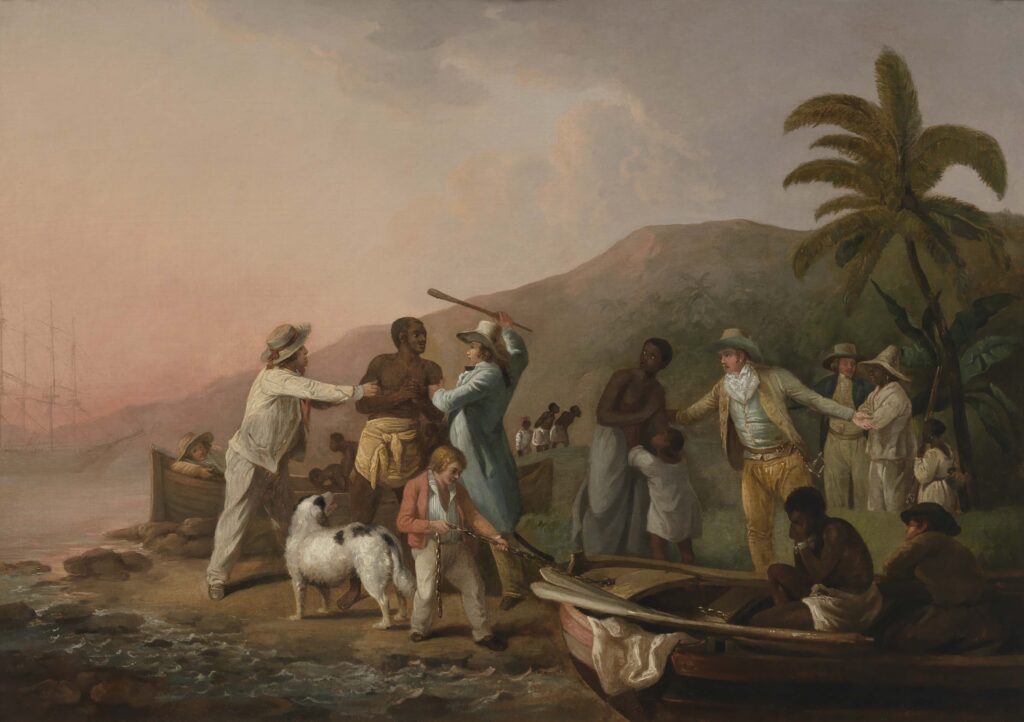
Slave Trade (Execrable Human Traffick, or The Affectionate Slaves). Painting by George Morland, 1788. Credit: Smithsonian National Museum of African American History and Culture
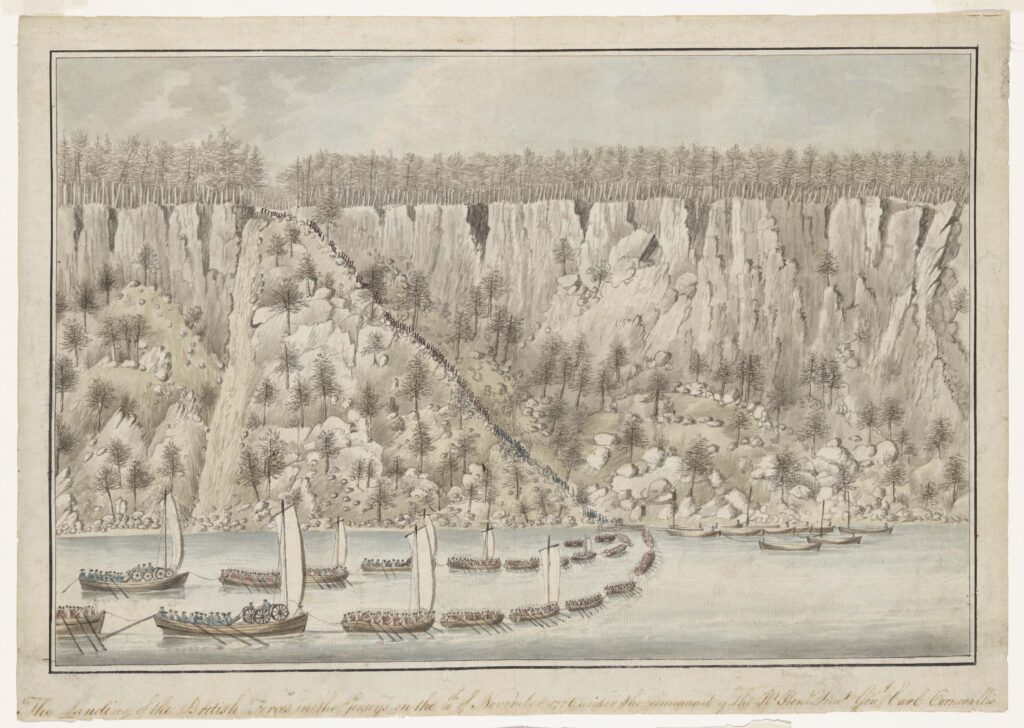
The landing of the British forces in the Jerseys on the 20th of November 1776 under the command of the Rt. Honl. Lieut. Genl. Earl Cornwallis. Drawing by Thomas Davies, 1776. Credit: The New York Public Library
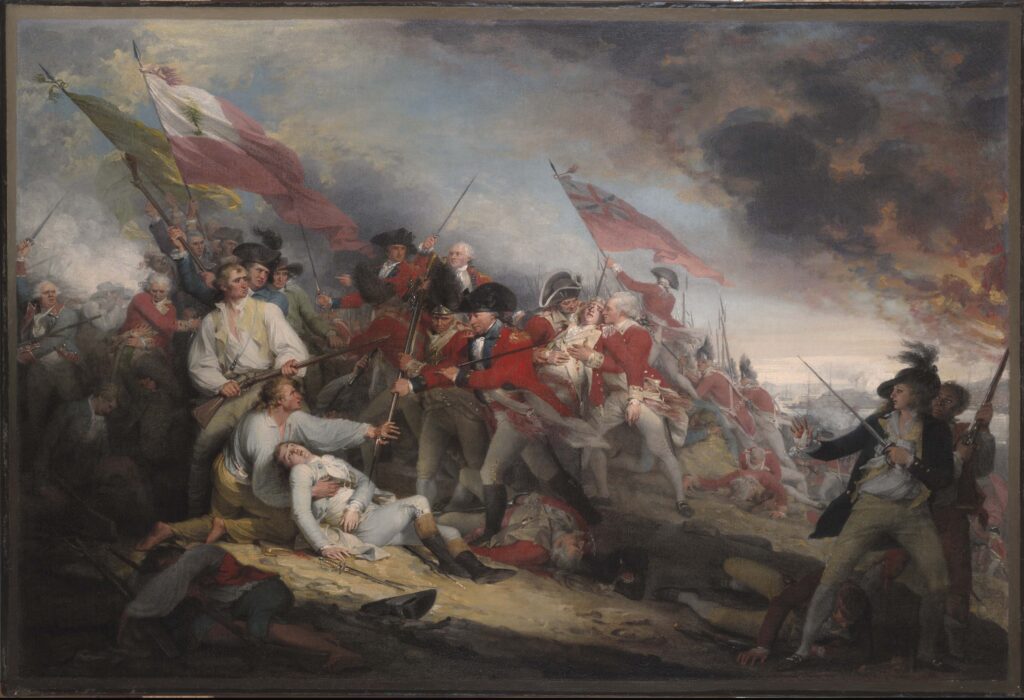
The Battle of Bunker’s Hill, June 17, 1775. Painting by John Trumbull, 1786. Credit: Yale University Art Gallery
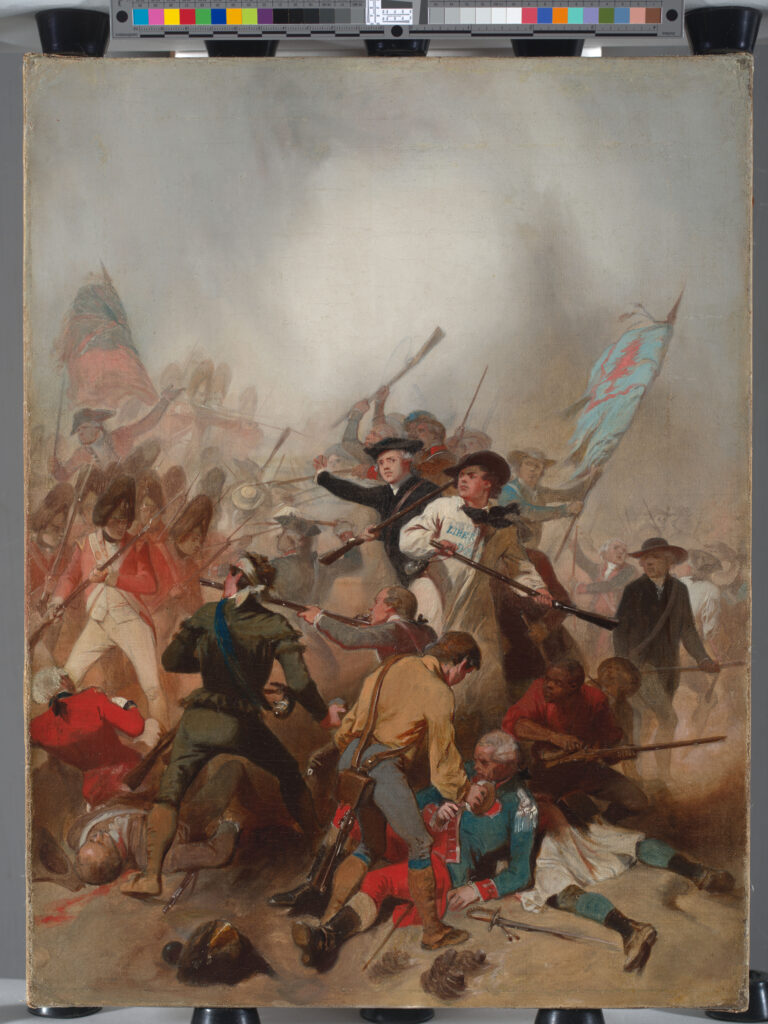
Battle of Bunker Hill. Painting by Alonzo Chappel, 1859. Credit: Chicago History Museum, Bridgeman Images.
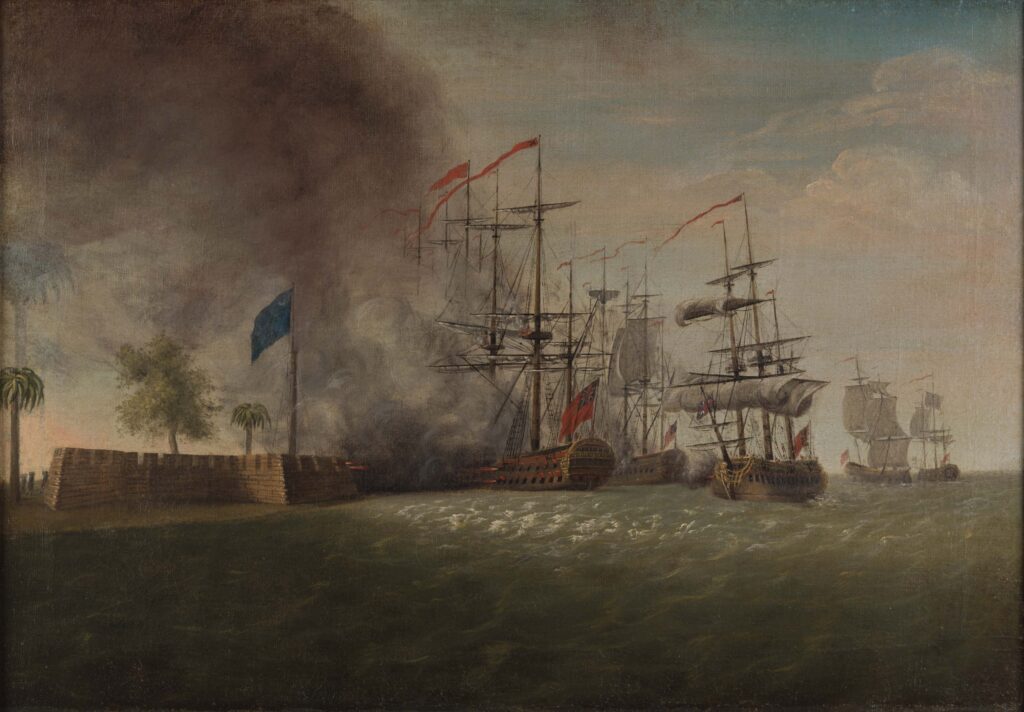
Sir Peter Parker’s Attack against Fort Moultrie. Painting by James Peale, 1782-1791. Credit: The Colonial Williamsburg Foundation
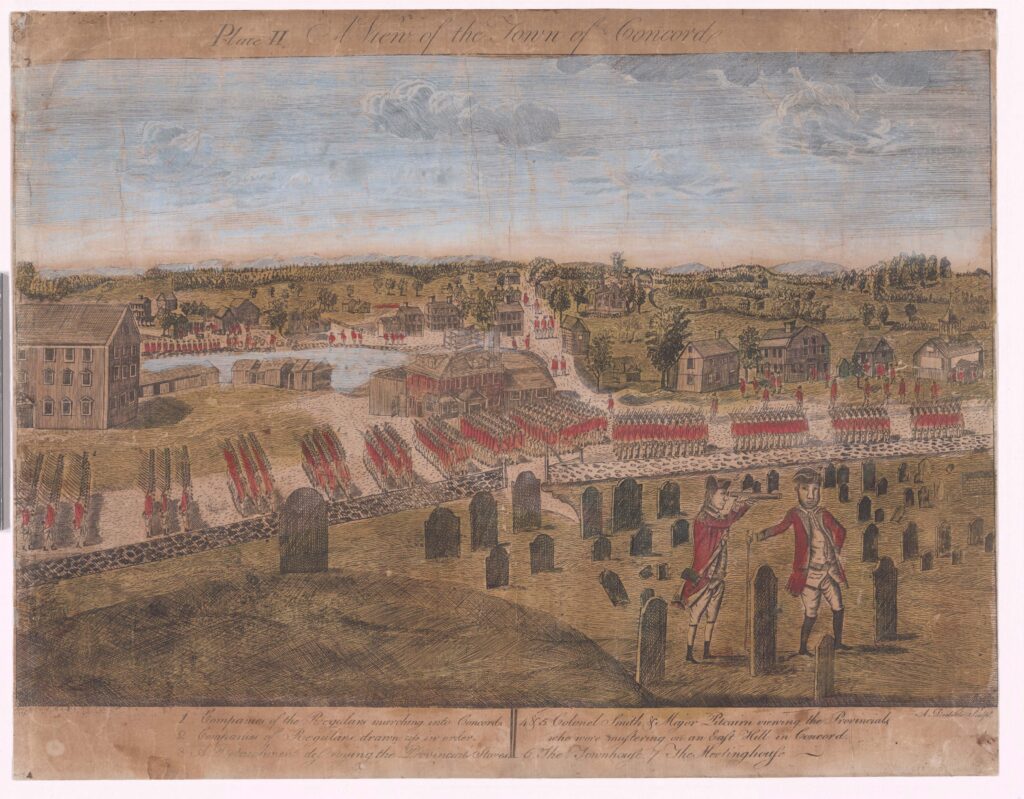
A view of the town of Concord. Engraving by Amos Doolittle and Ralph Earl, 1775. Credit: The New York Public Library
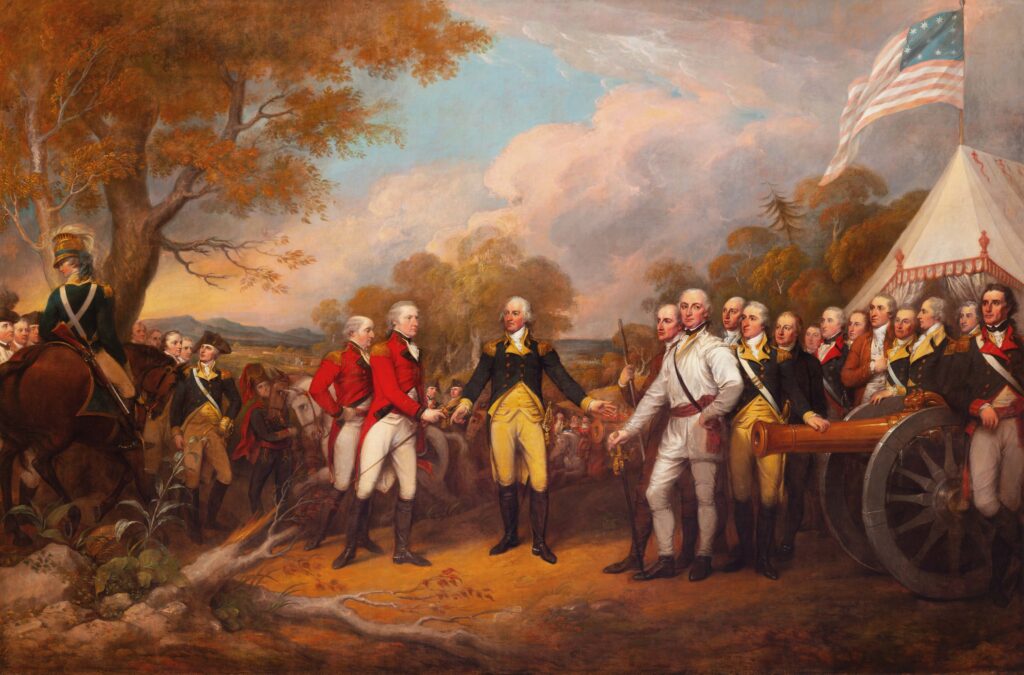
The Surrender of General Burgoyne. Painting by John Trumbull, 1821. Credit: Architect of the Capitol
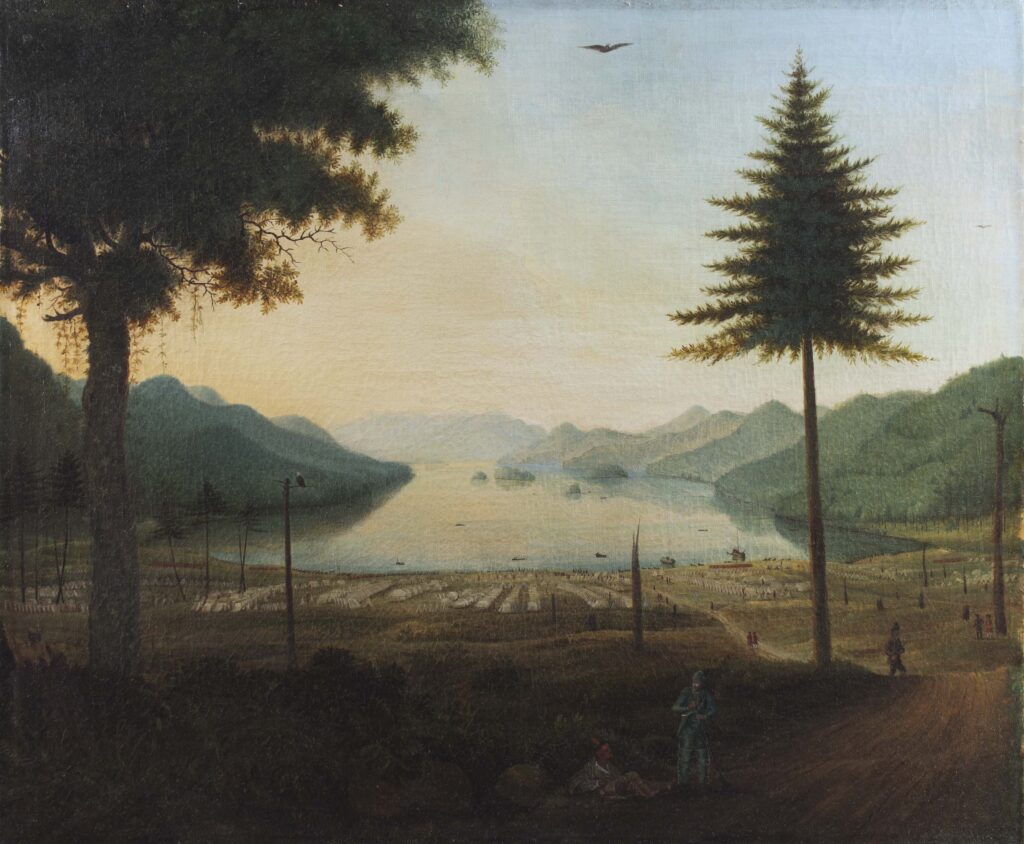
View of the Lines at Lake George, 1759. Painting by Thomas Davies, 1774. Credit: Fort Ticonderoga Museum Collection
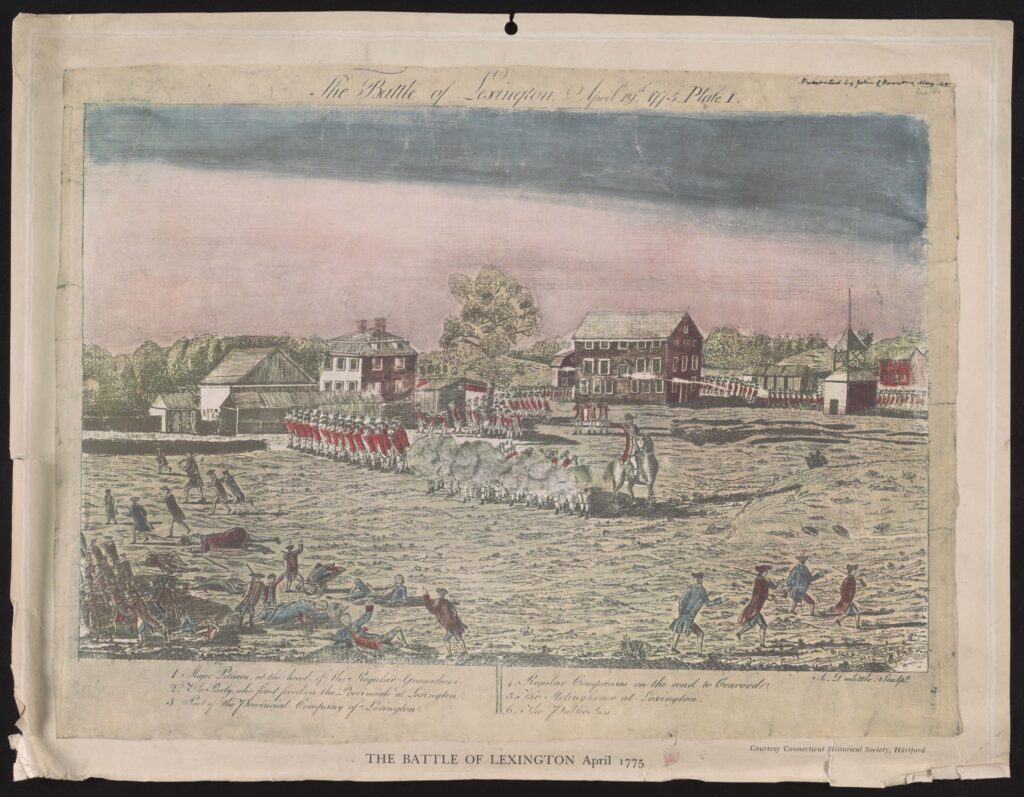
The Battle of Lexington April 1775. Sketch by Amos Doolittle, 1775. Credit: Library of Congress
Watercolor Art Gallery
Florentine Films commissioned original watercolors to depict historical references from the American Revolution. These works were completed by Rob Wood and Greg Harlin from Wood Ronsaville Harlin, Inc.
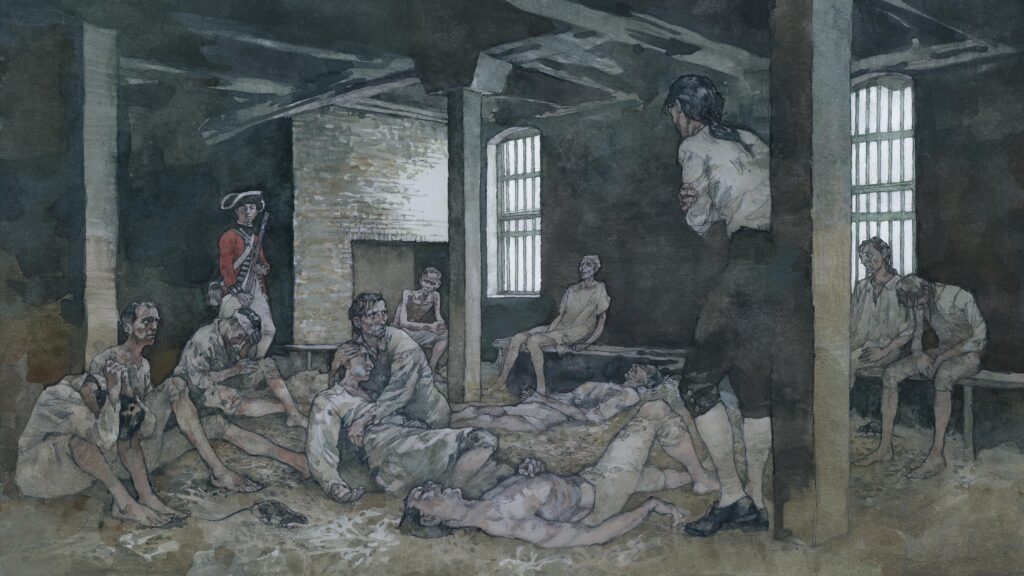
Continental soldiers, captured prisoners of war. Illustration by Wood Ronsaville Harlin, Inc, 2024. Credit: Original Illustrations created by Greg Harlin – Wood Ronsaville Harlin

Statue of King George III in Bowling Green, New York City. Illustration by Wood Ronsaville Harlin, 2024. Credit: Original Illustrations created by Greg Harlin – Wood Ronsaville Harlin
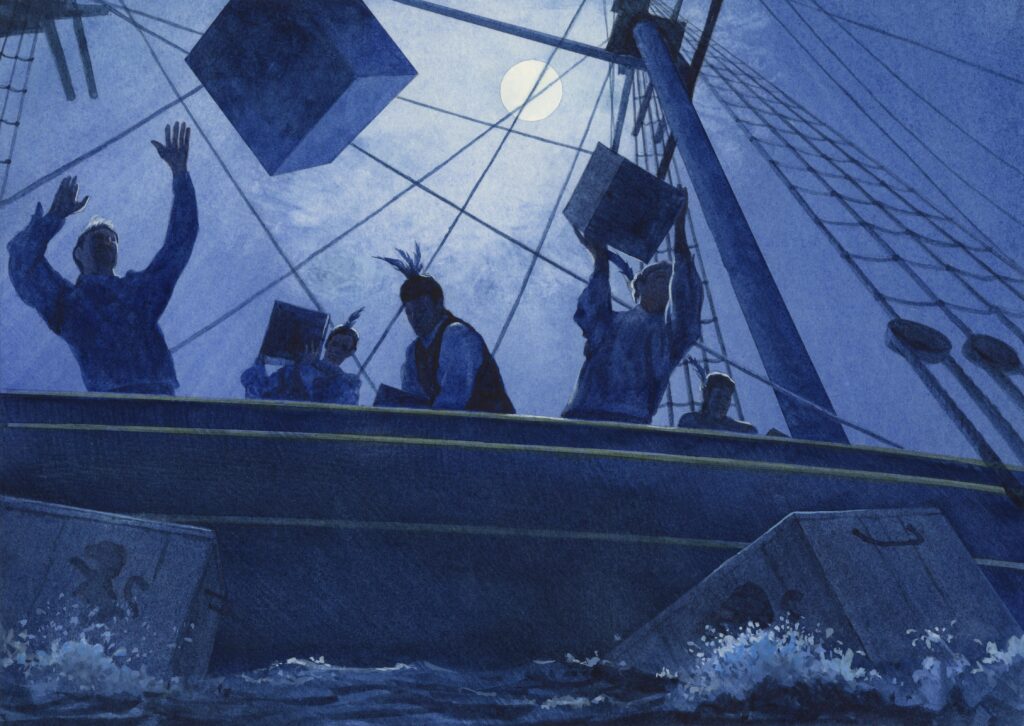
Boston Tea Party. Art by Wood Ronsaville Harlin, 2007. Credit: Art by Greg Harlin and Rob Wood – Wood Ronsaville Harlin

Statue of King George III in Bowling Green, New York City. Illustration by Wood Ronsaville Harlin, Inc, 2024. Credit: Original Illustrations created by Greg Harlin – Wood Ronsaville Harlin
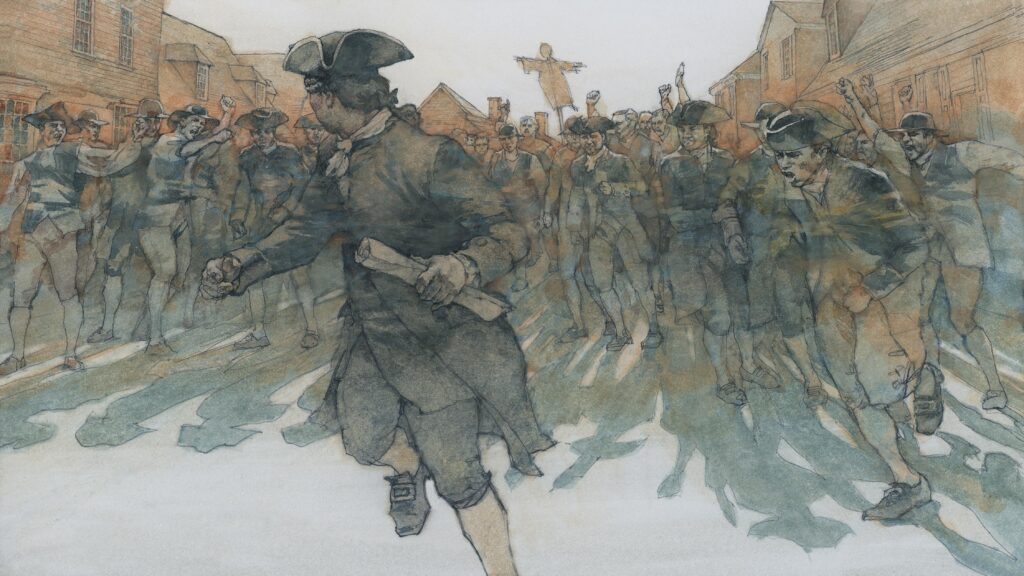
Angry Mob. Illustration by Wood Ronsaville Harlin, Inc, 2024. Credit: Original Illustrations created by Greg Harlin – Wood Ronsaville Harlin
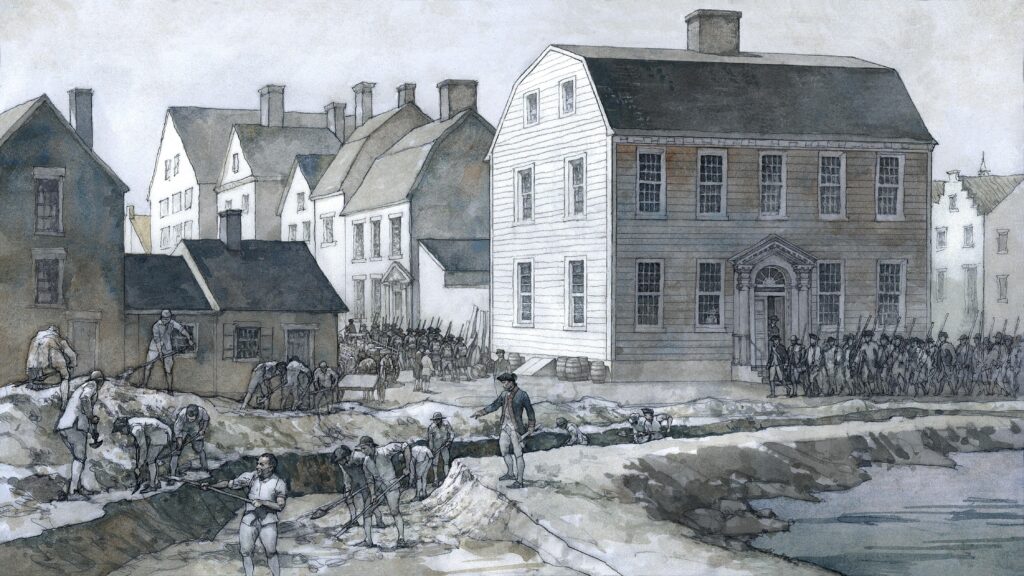
Continental Army occupying New York City in 1776. Illustration by Wood Ronsaville Harlin, Inc, 2024. Credit: Original Illustrations created by Greg Harlin – Wood Ronsaville Harlin

Continental Army Camp Life. Illustration by Wood Ronsaville Harlin, Inc, 2024. Credit: Original Illustrations created by Greg Harlin – Wood Ronsaville Harlin
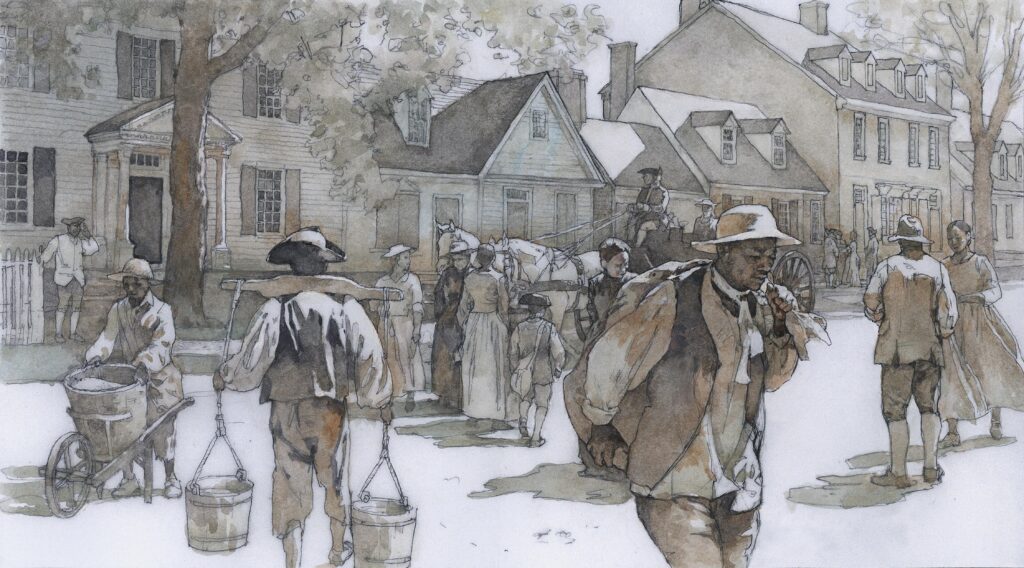
Southern street scene. Illustration by Wood Ronsaville Harlin, Inc, 2024. Credit: Original Illustrations created by Greg Harlin – Wood Ronsaville Harlin
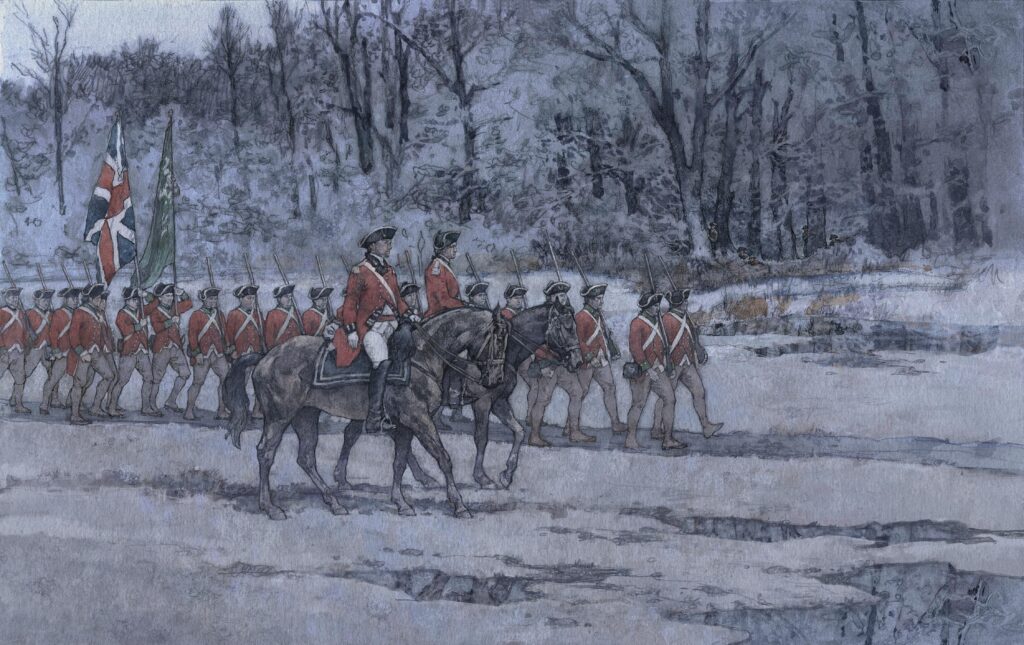
Benedict Arnold’s march to Richmond. Illustration by Wood Ronsaville Harlin, 2024. Credit: Original Illustrations created by Greg Harlin – Wood Ronsaville Harlin
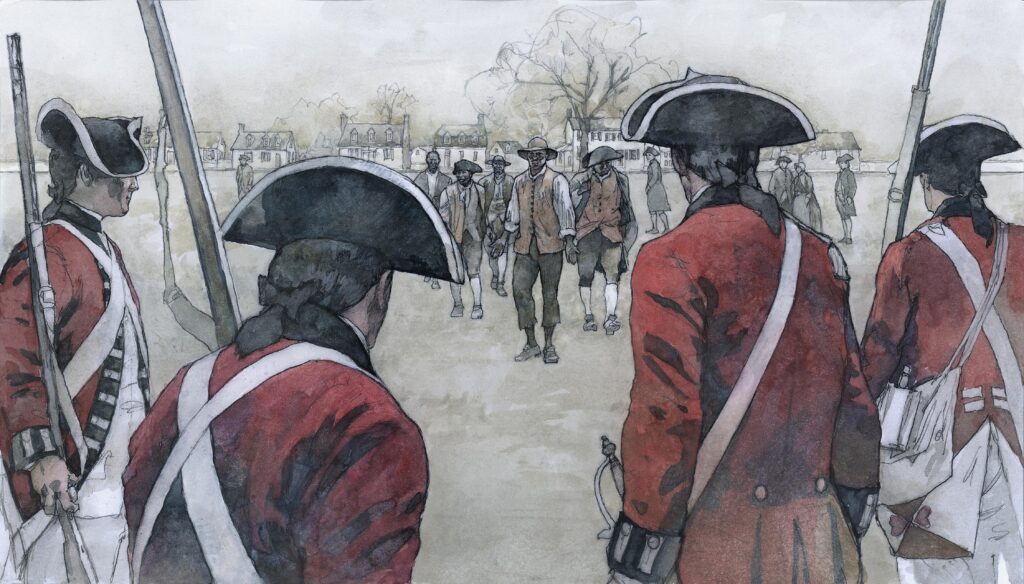
The war in the South, enslaved people leaving to join the British army. Illustration by Wood Ronsaville Harlin, Inc, 2024. Credit: Original Illustrations created by Greg Harlin – Wood Ronsaville Harlin
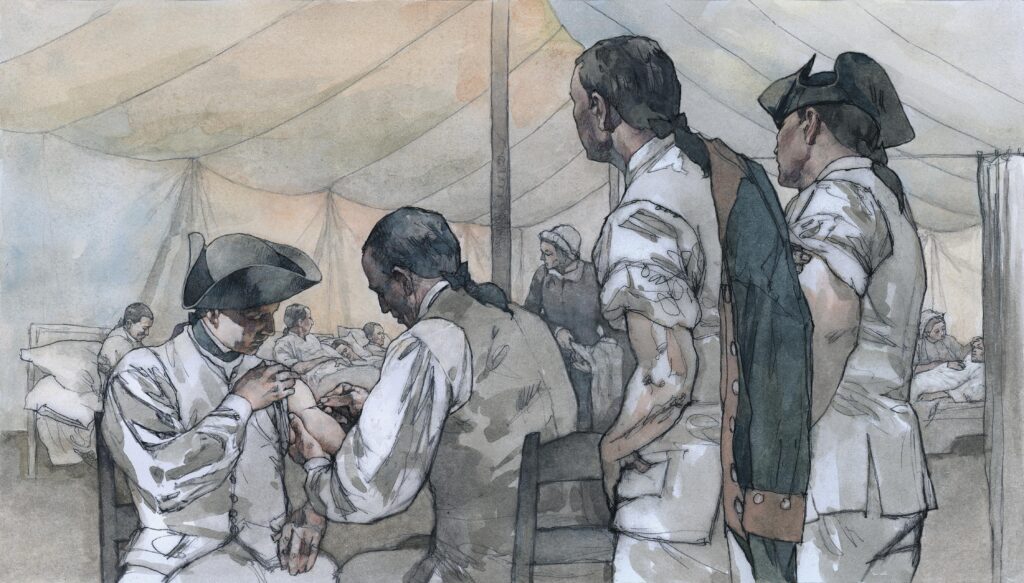
Soldiers with Smallpox. Illustration by Wood Ronsaville Harlin, 2024. Credit: Original Illustrations created by Greg Harlin – Wood Ronsaville Harlin
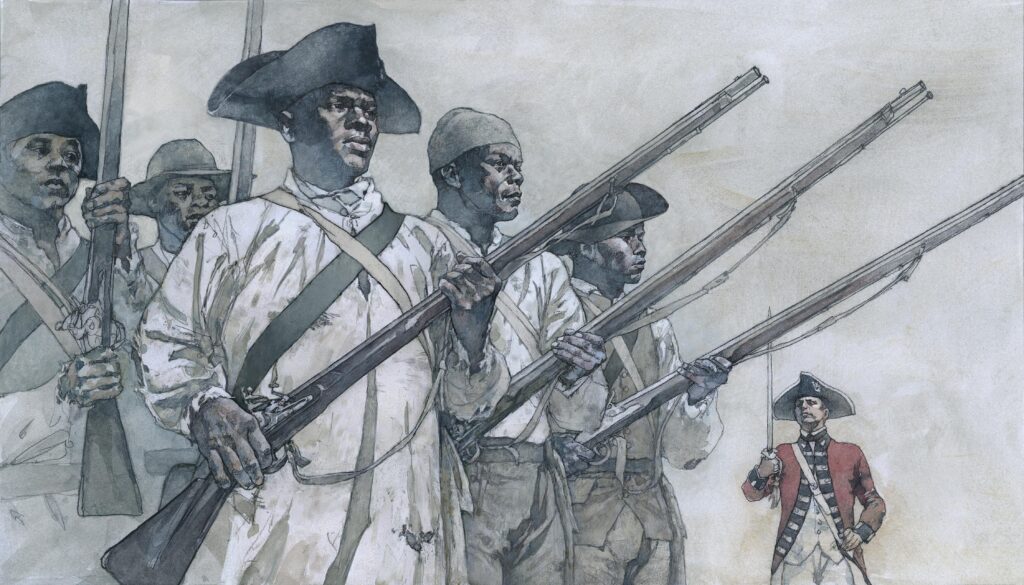
Dunmore Black Ethiopian Regiment Soldiers. Watercolor by Greg Harlin, 2024. Credit: Original Illustrations created by Greg Harlin – Wood Ronsaville Harlin

Stockbridge Native Americans at Cambridge Soldier Camp in 1775. Watercolor by Greg Harlin, 2023. Credit: Original Illustrations created by Greg Harlin – Wood Ronsaville Harlin
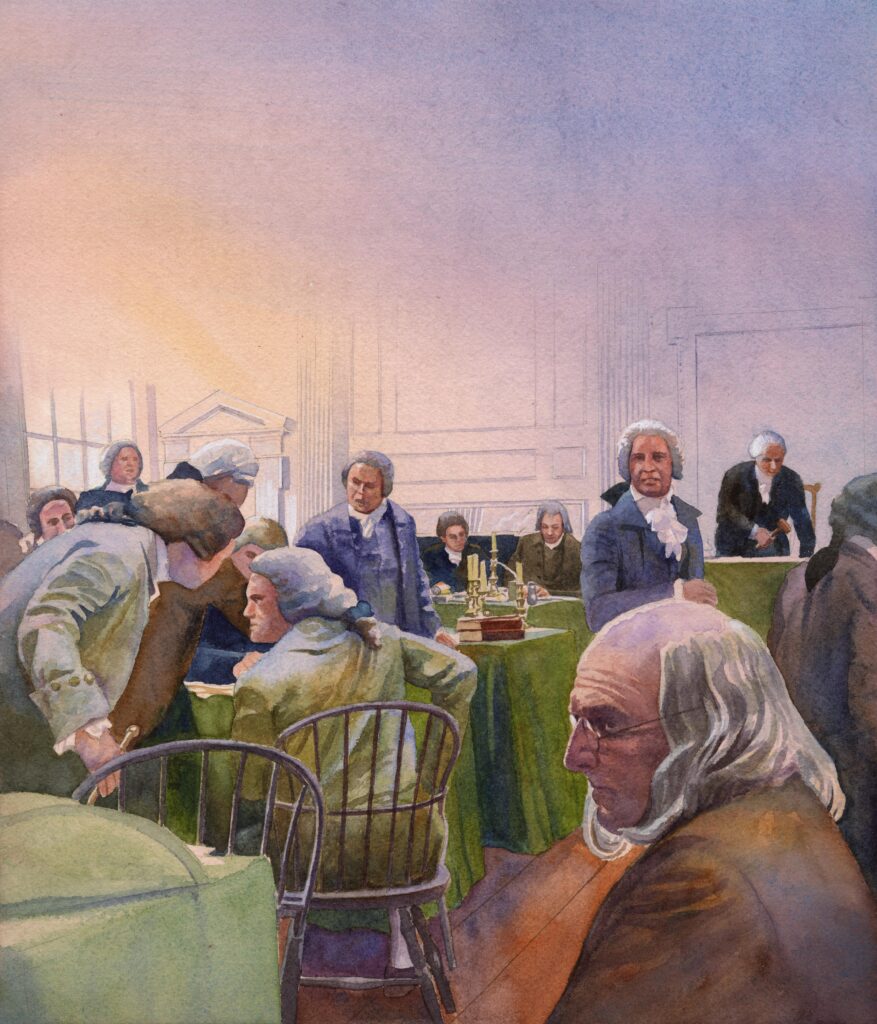
Benjamin Franklin with other delegates at the Constitutional Convention in Philadelphia in 1787 in Independence Hall. Illustration by Wood Ronsaville Harlin, Inc, 2008. Credit: Art by Rob Wood – Wood Ronsaville Harlin
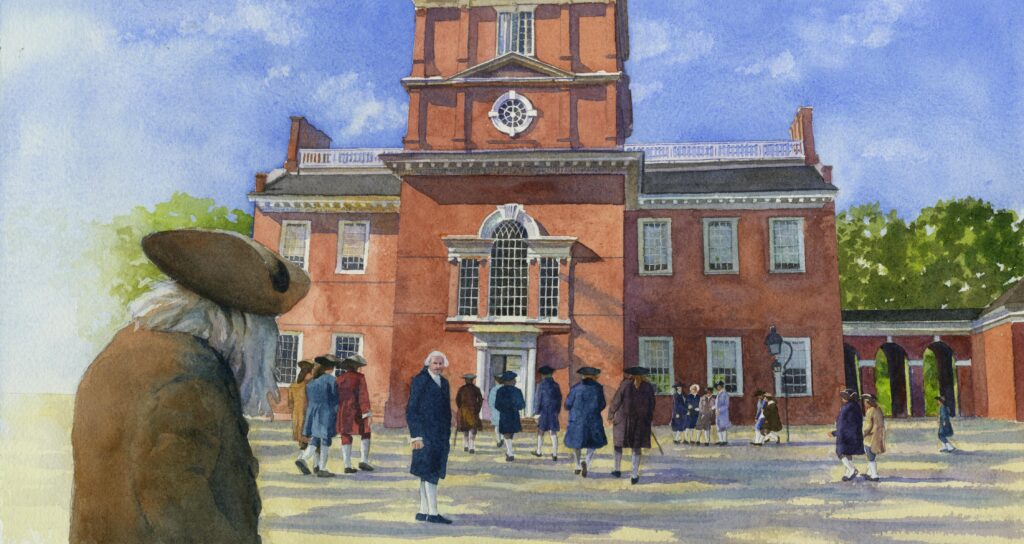
Independence Hall in Philadelphia, Pennsylvania with delegates for the Constitutional Convention in 1787. Illustration by Rob Wood, 2009. Credit: Art by Rob Wood – Wood Ronsaville Harlin
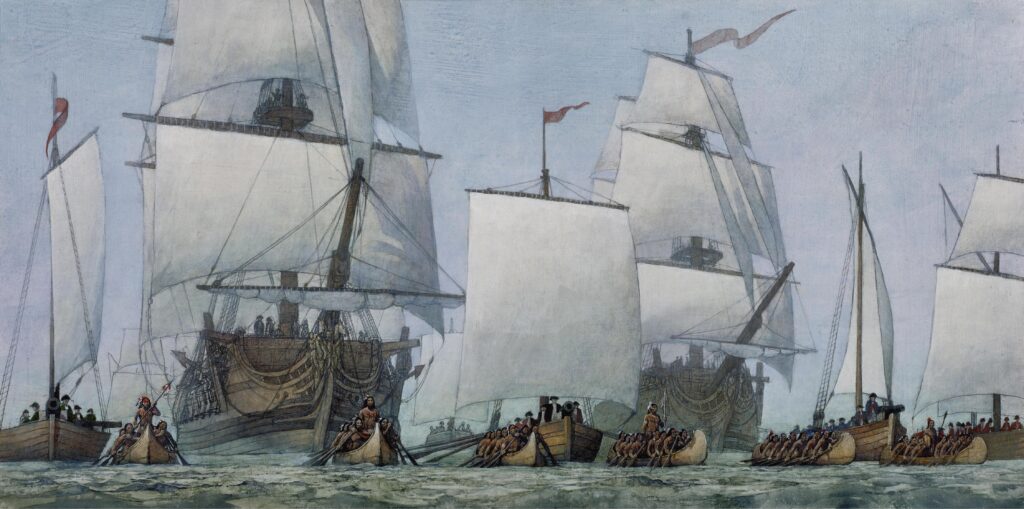
Burgoyne’s Invasion Fleet Lake Champlain, 1777. Illustration by Wood Ronsaville Harlin, Inc, 1998. Credit: Art by Greg Harlin – Wood Ronsaville Harlin
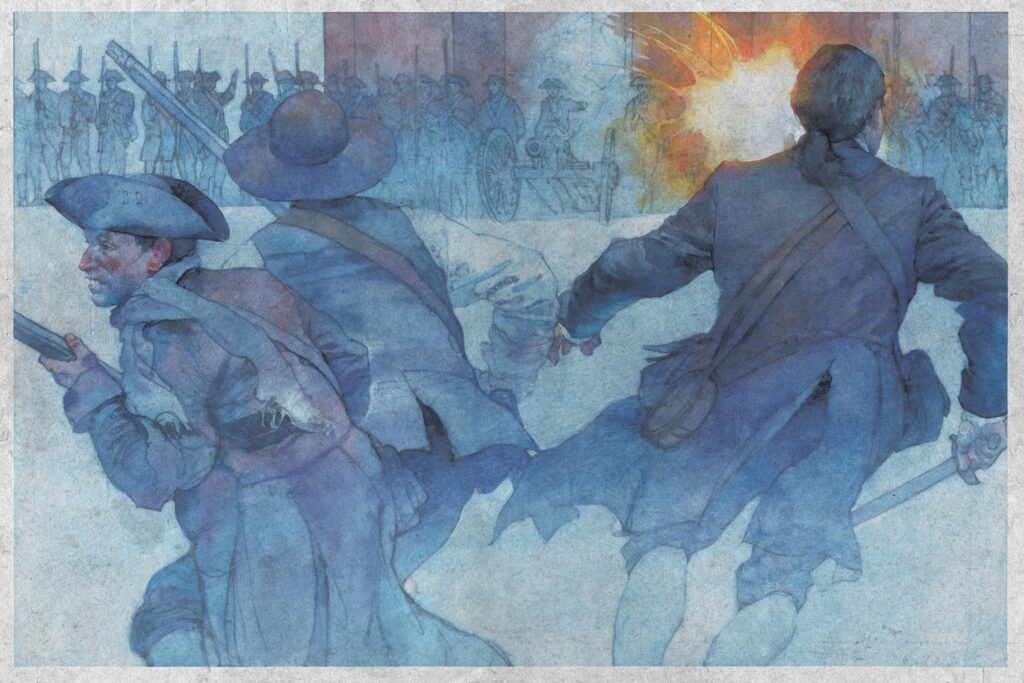
Battle Scene. Illustration by Wood Ronsaville Harlin, Inc. Credit: Art by Greg Harlin – Wood Ronsaville Harlin
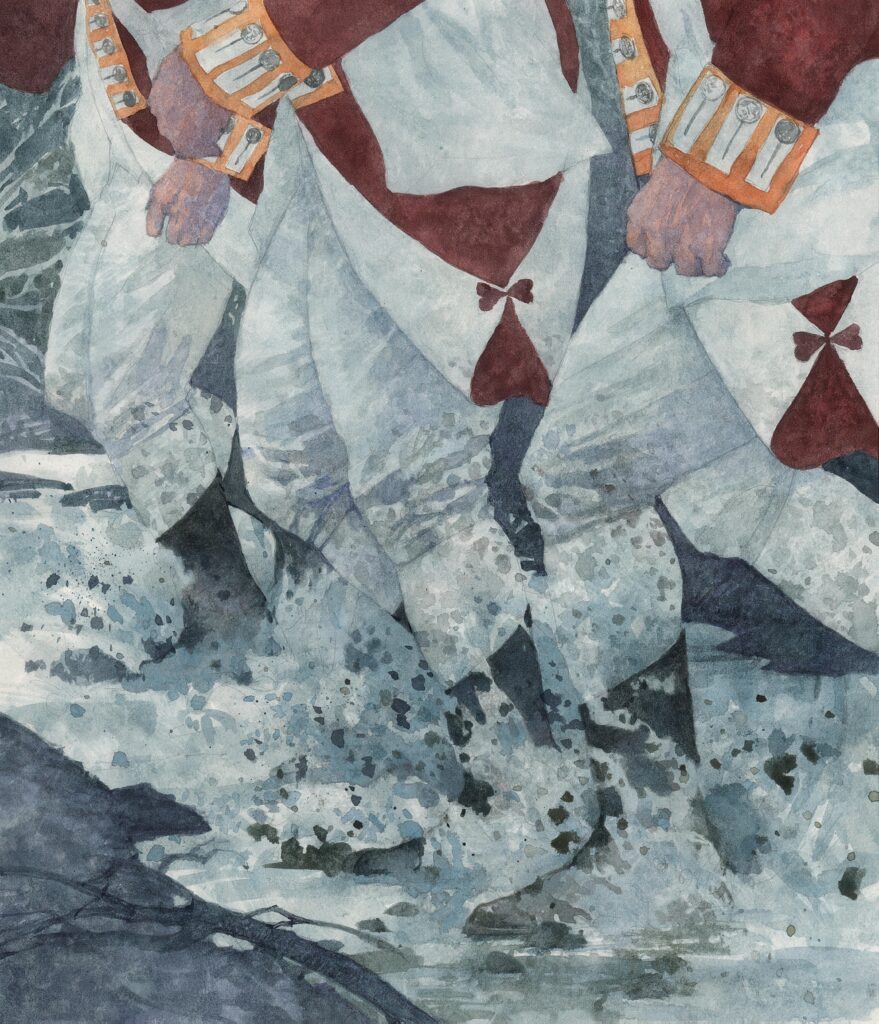
British soldiers landing. Illustration by Wood Ronsaville Harlin, Inc. Credit: Art by Greg Harlin and Rob Wood – Wood Ronsaville Harlin

British soldiers patrol roads. Illustration by Wood Ronsaville Harlin, Inc. Credit: Art by Greg Harlin – Wood Ronsaville Harlin

American militia firing muskets. Watercolor by Greg Harlin. Credit: Art by Greg Harlin and Rob Wood – Wood Ronsaville Harlin
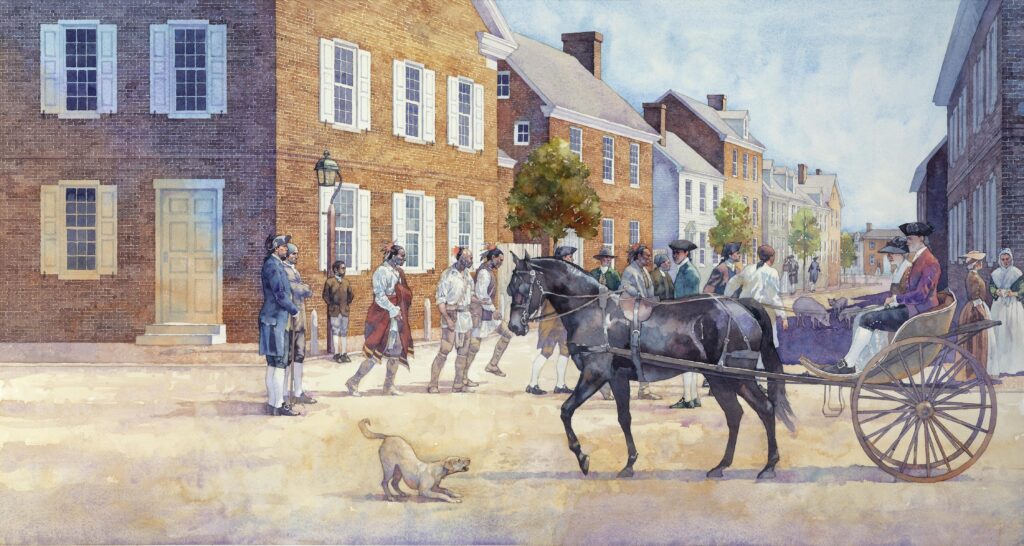
Churchyard. Watercolor by Greg Harlin. Credit: Art by Greg Harlin – Wood Ronsaville Harlin

Marketplace. Illustration by Wood Ronsaville Harlin, Inc. Credit: Art by Greg Harlin – Wood Ronsaville Harlin

Revolutionary War Patriots. Illustration by Wood Ronsaville Harlin, Inc. Credit: Art by Rob Wood – Wood Ronsaville Harlin
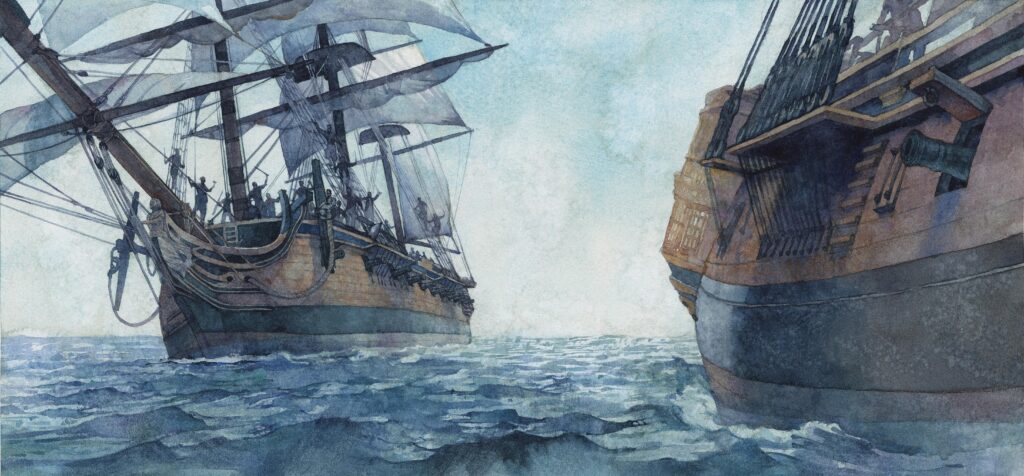
A ship with the American flag approaches. Illustration by Wood Ronsaville Harlin, Inc. Credit: Art by Greg Harlin – Wood Ronsaville Harlin
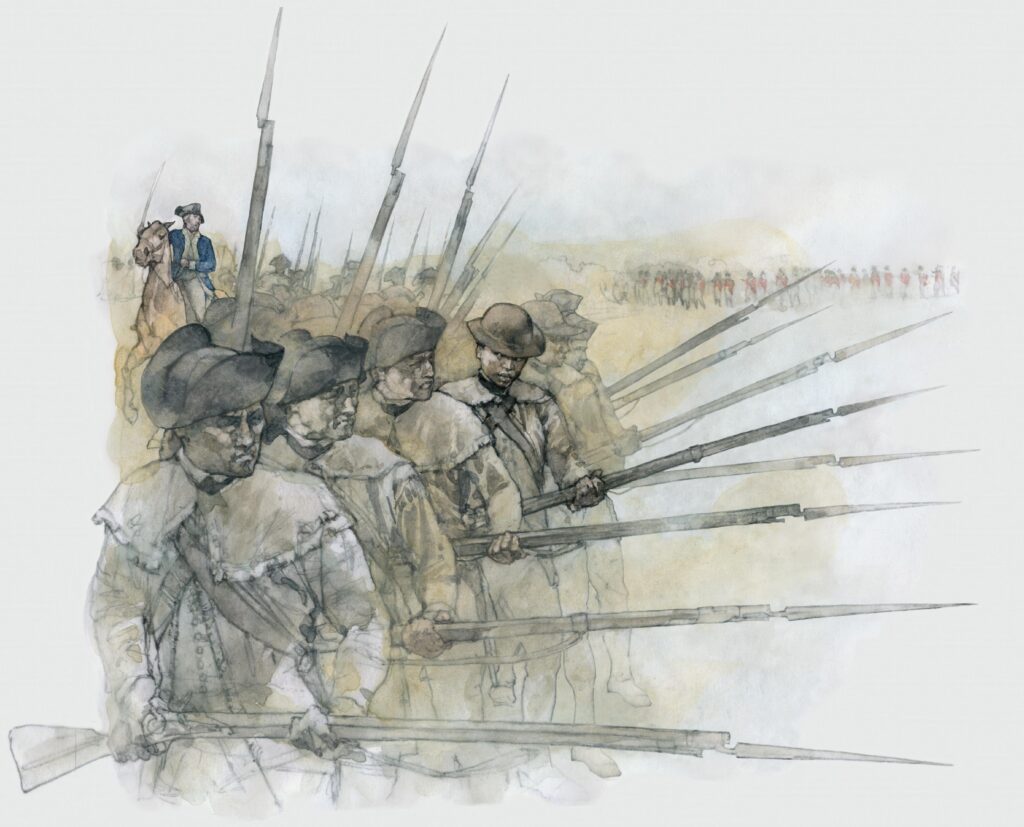
African Americans standing in line ready for battle. Illustration by Wood Ronsaville Harlin, Inc. Credit: Art by Greg Harlin – Wood Ronsaville Harlin
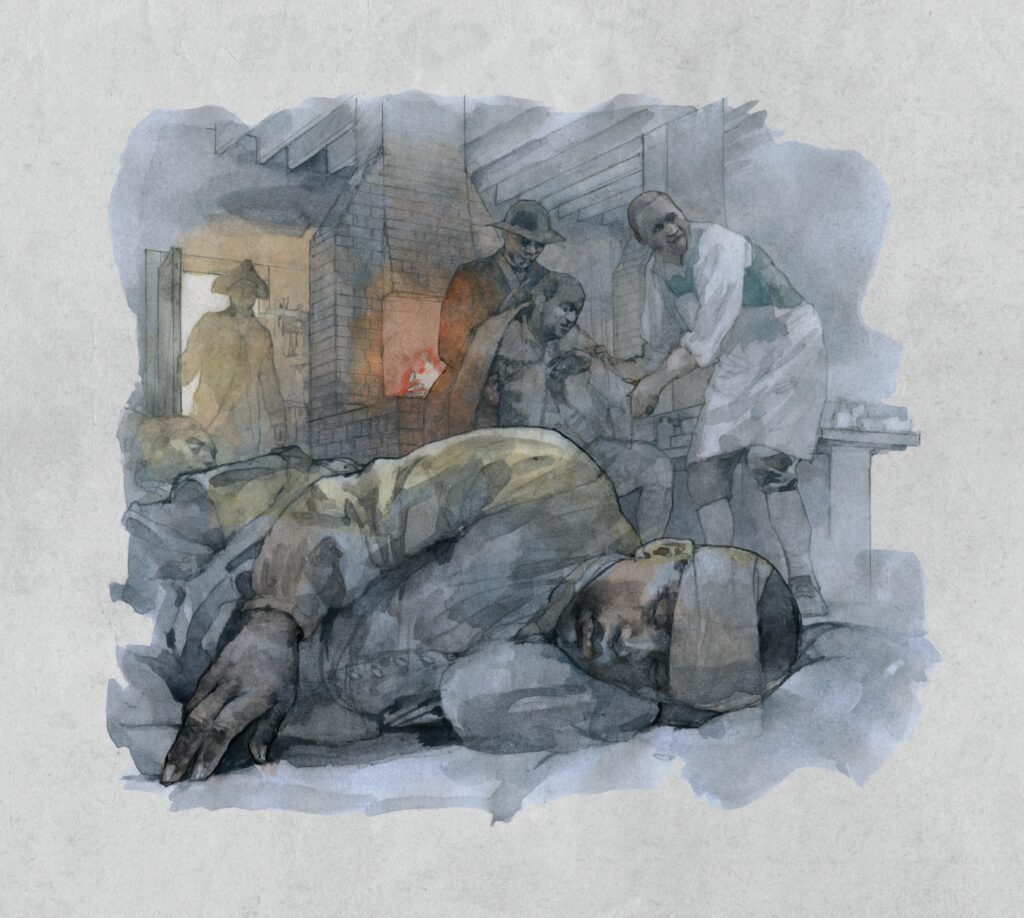
African Americans at camp. Illustration by Wood Ronsaville Harlin, Inc. Credit: Art by Greg Harlin – Wood Ronsaville Harlin
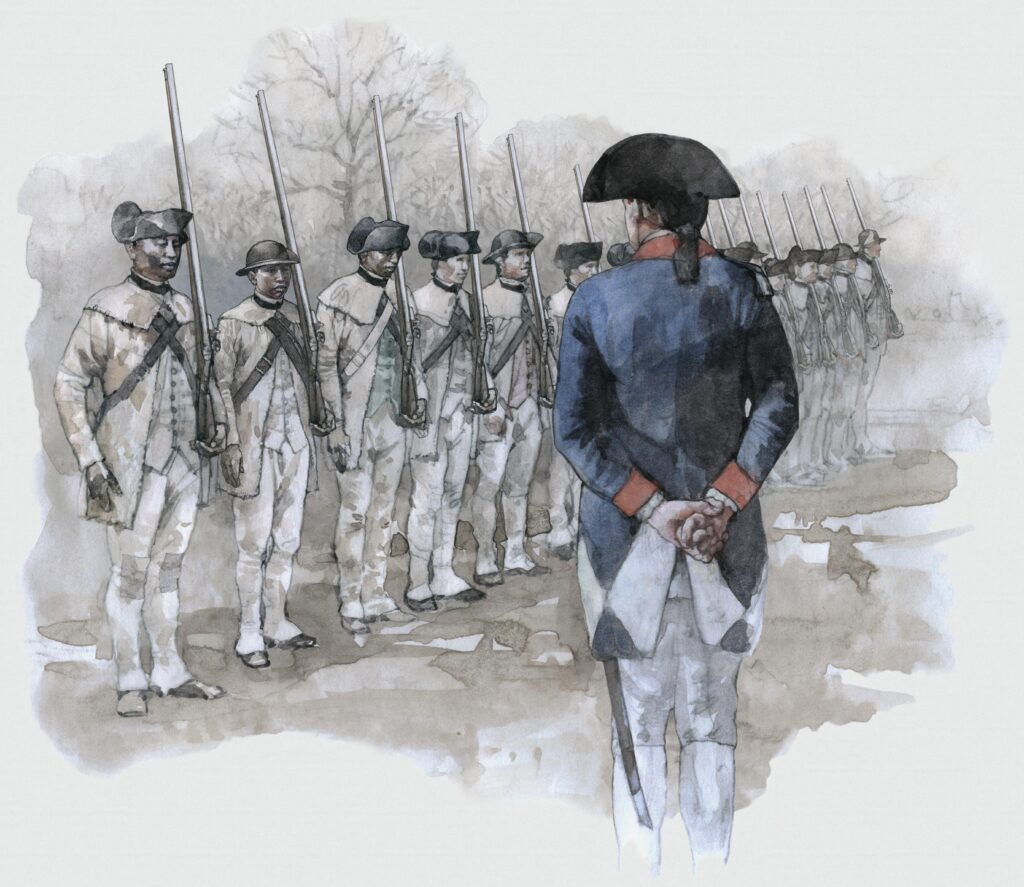
African American Stories from the Revolution. Watercolor by Greg Harlin. Credit: Art by Greg Harlin – Wood Ronsaville Harlin
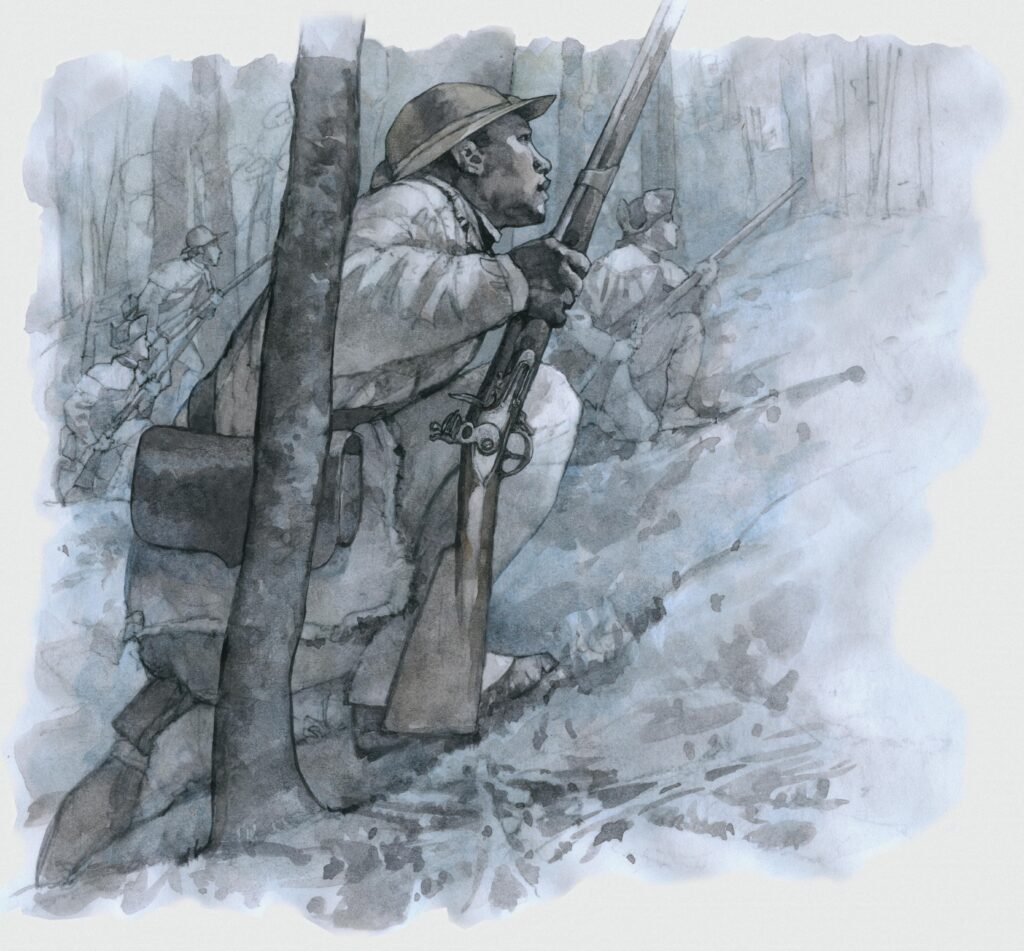
African American Stories from the Revolution. Illustration by Wood Ronsaville Harlin, Inc. Credit: Art by Greg Harlin – Wood Ronsaville Harlin

African Americans enlist in the army. Illustration by Wood Ronsaville Harlin, Inc. Credit: Art by Greg Harlin – Wood Ronsaville Harlin
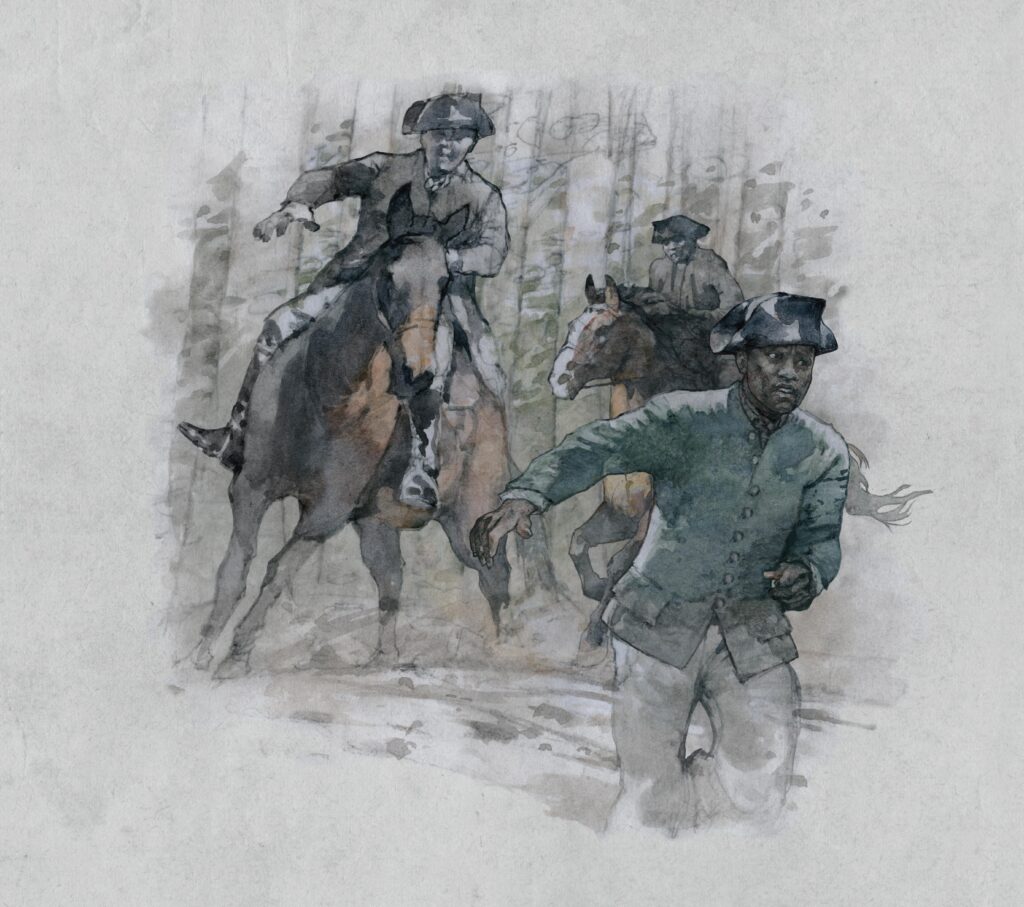
African American Stories from the Revolution. Watercolor by Greg Harlin. Credit: Art by Greg Harlin – Wood Ronsaville Harlin
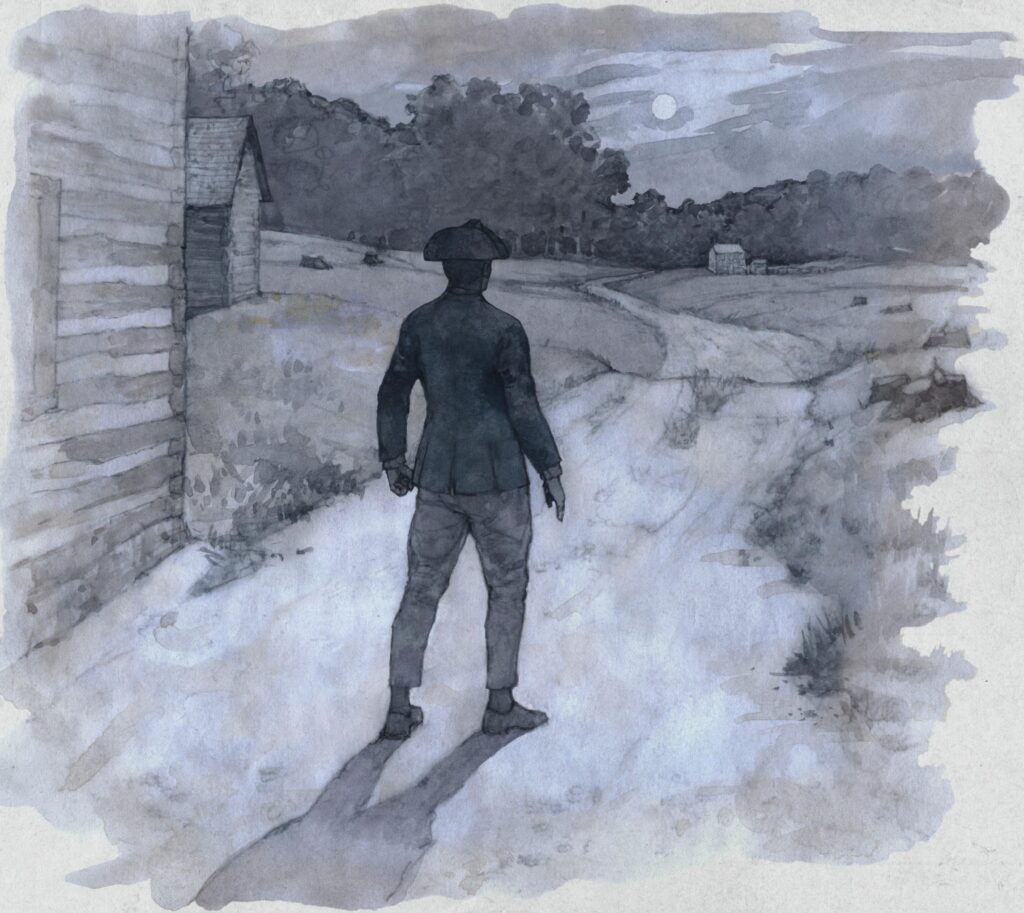
African American Stories from the Revolution. Illustration by Wood Ronsaville Harlin, Inc. Credit: Art by Greg Harlin – Wood Ronsaville Harlin
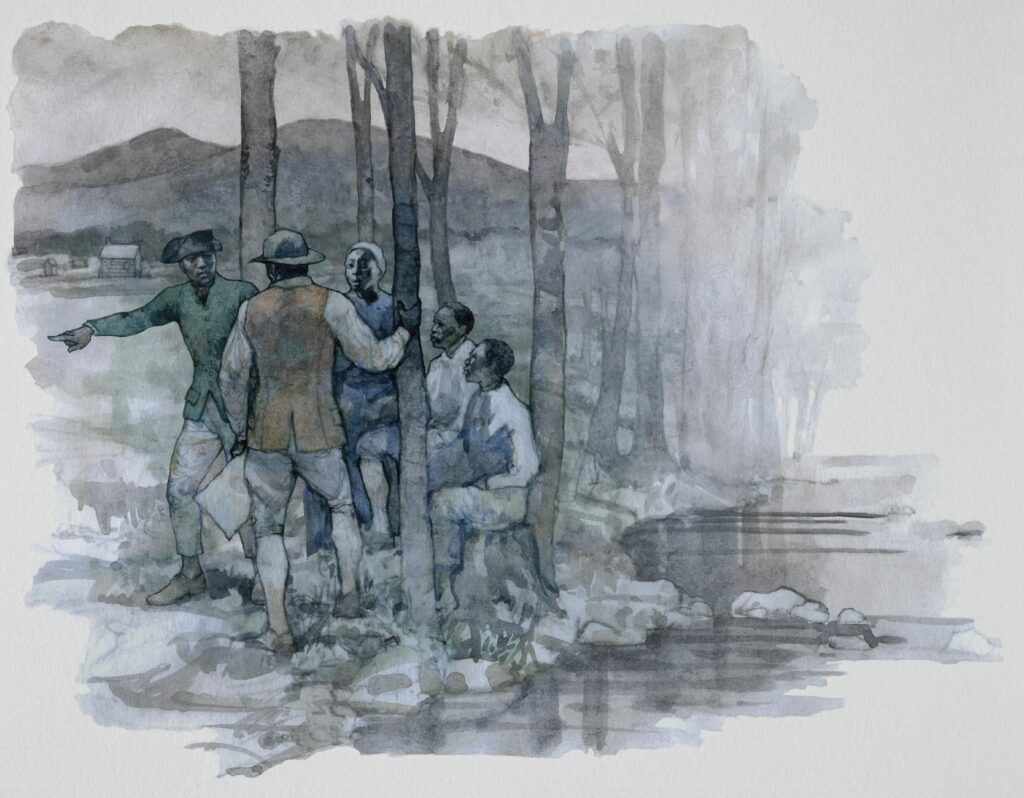
African American Stories from the Revolution. Illustration by Wood Ronsaville Harlin, Inc. Credit: Art by Greg Harlin – Wood Ronsaville Harlin
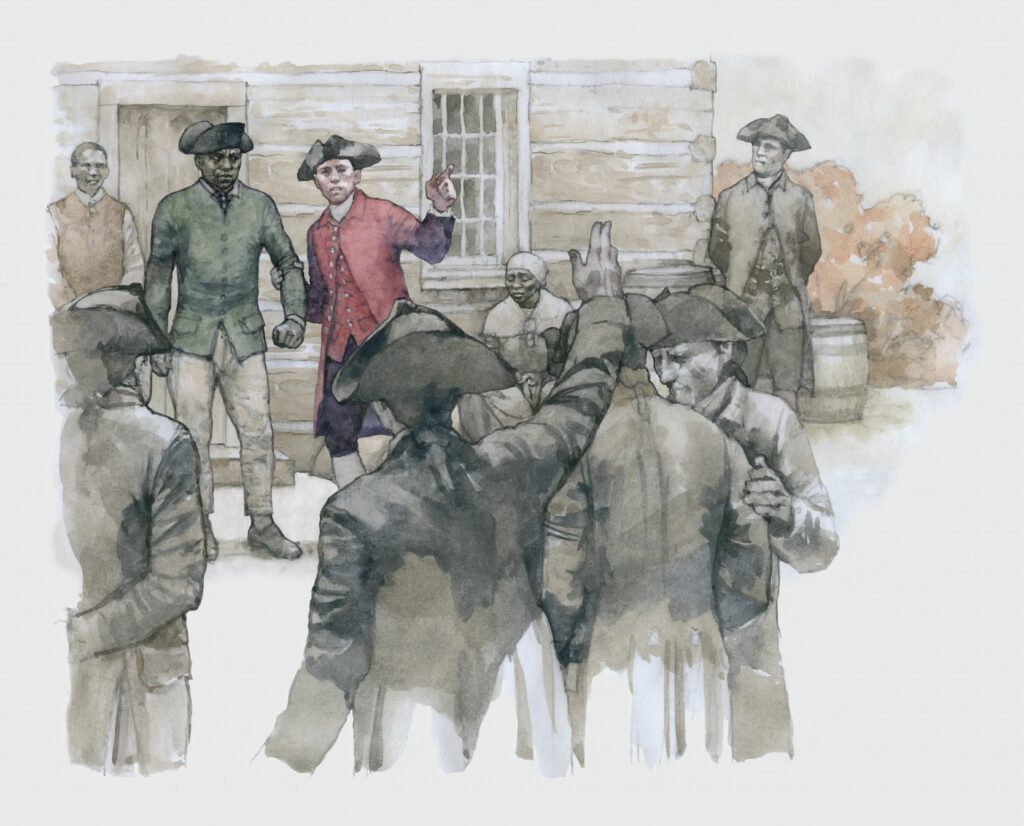
African American Stories from the Revolution. Illustration by Wood Ronsaville Harlin, Inc. Credit: Art by Greg Harlin – Wood Ronsaville Harlin
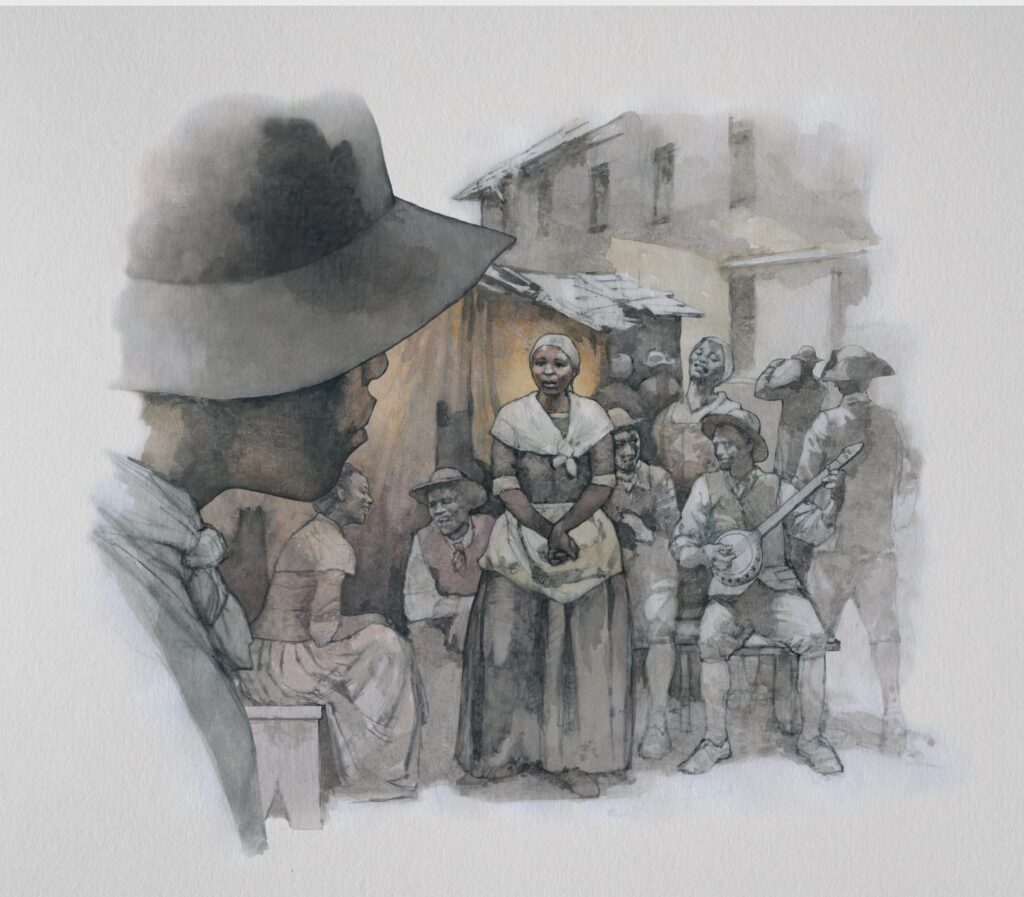
African American Stories from the Revolution. Illustration by Wood Ronsaville Harlin, Inc. Credit: Art by Greg Harlin – Wood Ronsaville Harlin
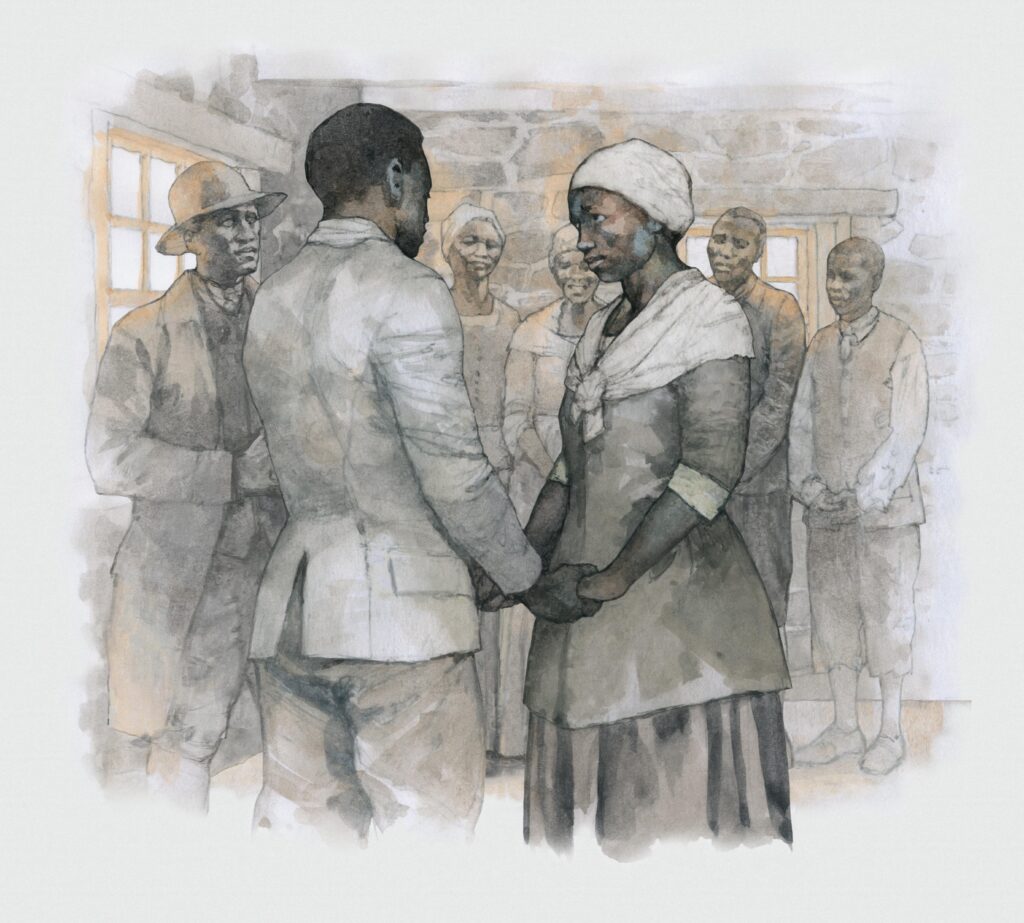
African American Stories from the Revolution. Illustration by Wood Ronsaville Harlin, Inc. Credit: Art by Greg Harlin – Wood Ronsaville Harlin
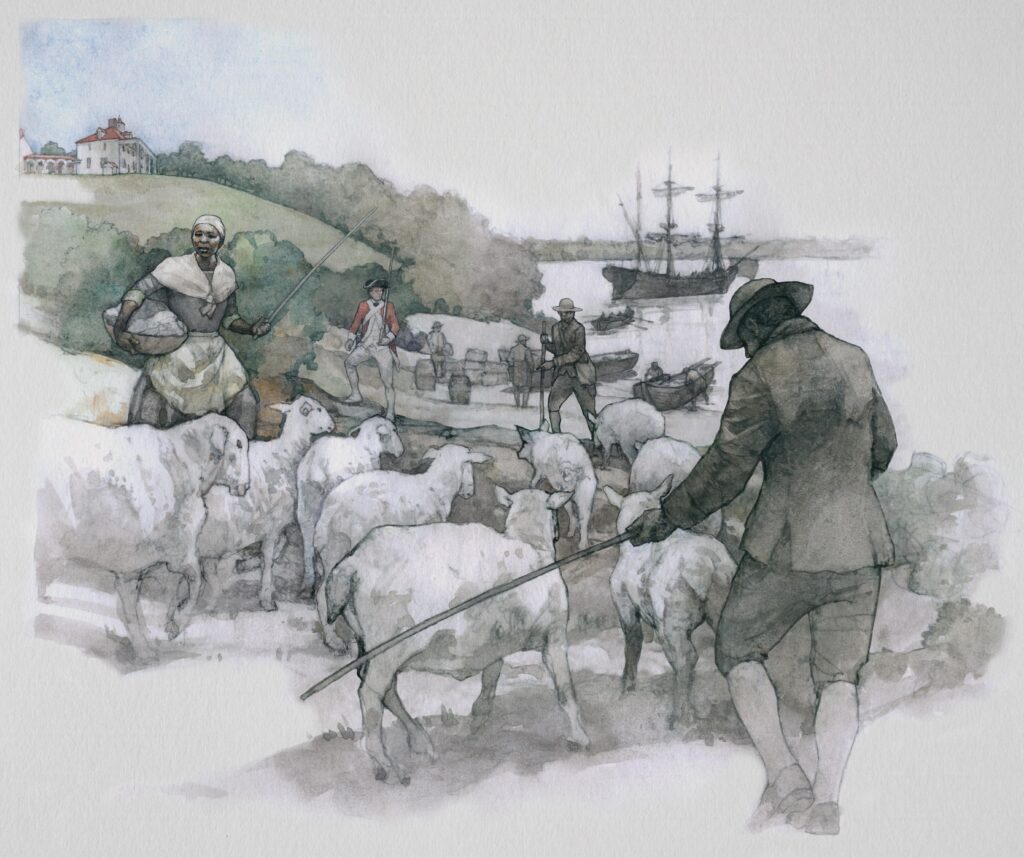
African Americans herding sheep by the shoreline. Illustration by Wood Ronsaville Harlin, Inc. Credit: Art by Greg Harlin – Wood Ronsaville Harlin
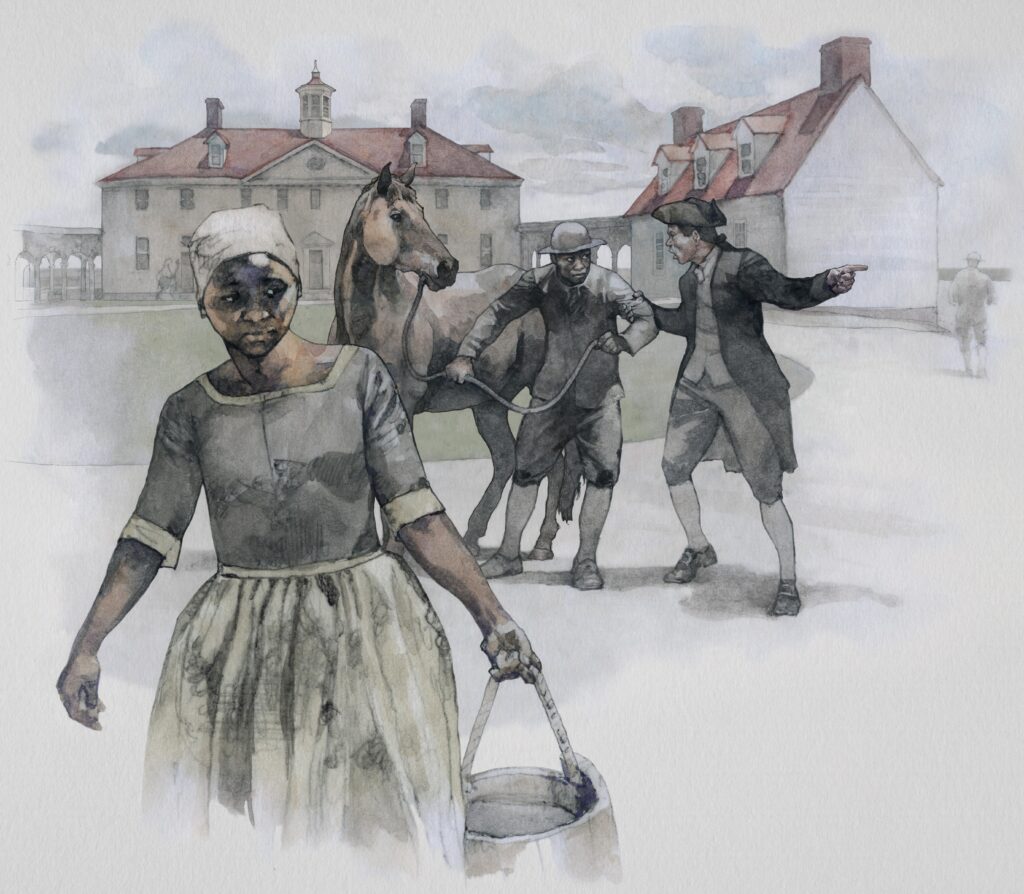
African Americans at Mount Vernon. Illustration by Wood Ronsaville Harlin, Inc. Credit: Art by Greg Harlin – Wood Ronsaville Harlin
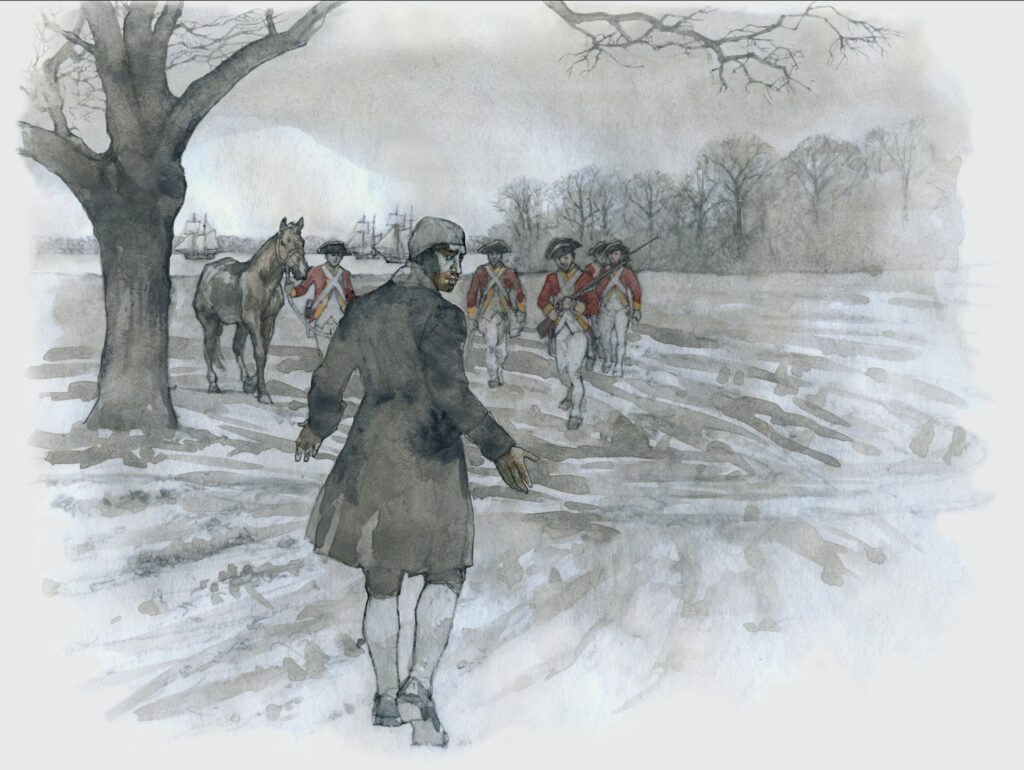
An African American man standing before British soldiers. Illustration by Wood Ronsaville Harlin, Inc. Credit: Art by Greg Harlin – Wood Ronsaville Harlin
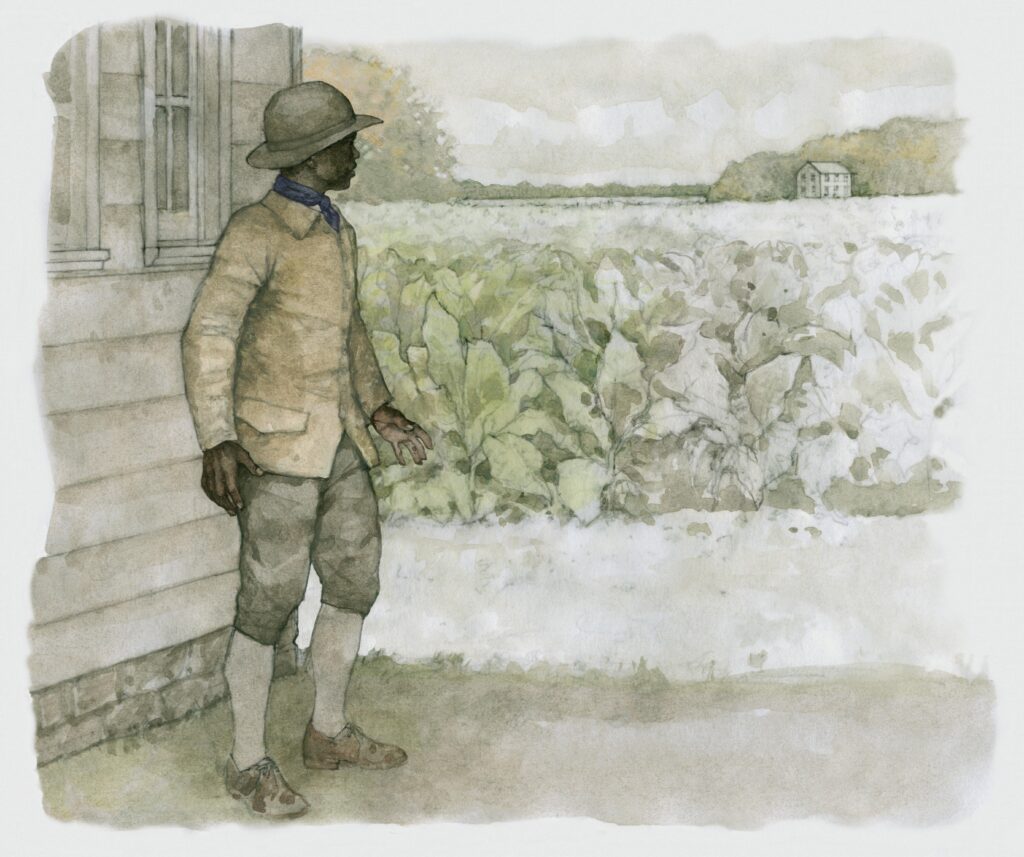
An African American standing at a plantation field. Illustration by Wood Ronsaville Harlin, Inc. Credit: Art by Greg Harlin – Wood Ronsaville Harlin

African Americans at a British camp. Washing clothes, tents to the side. African American Stories from the Revolution. Illustration by Wood Ronsaville Harlin, Inc. Credit: Art by Greg Harlin – Wood Ronsaville Harlin
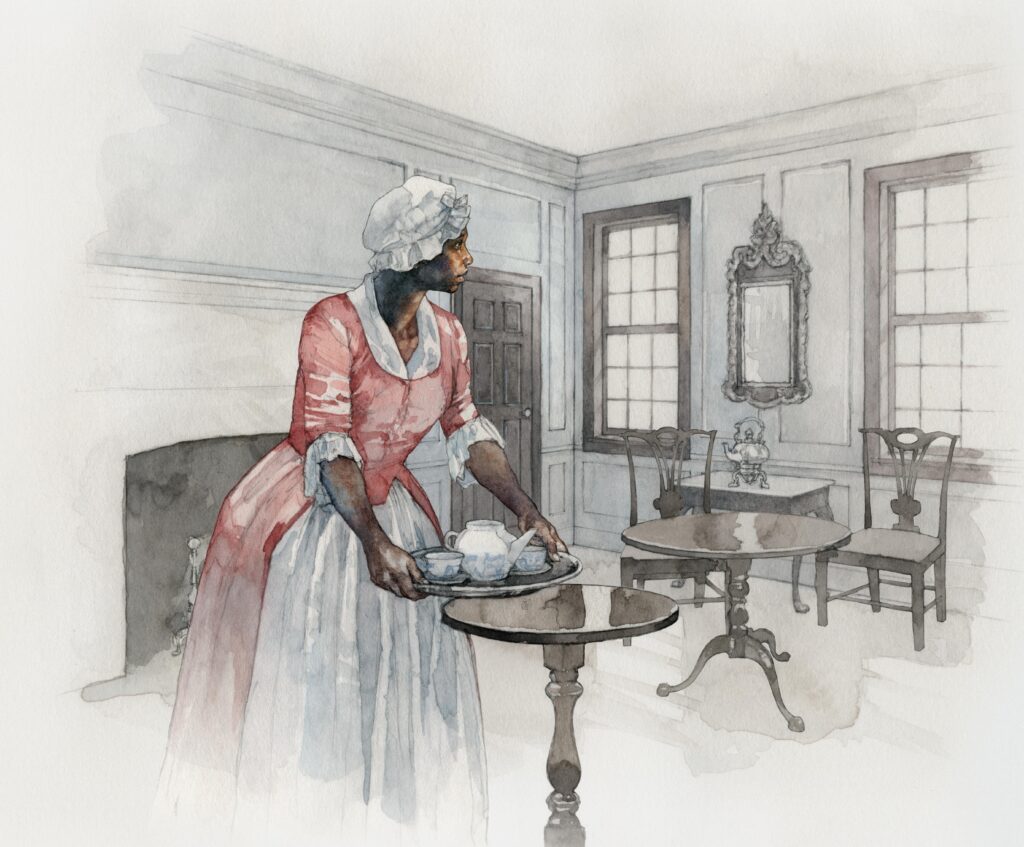
African American Stories from the Revolution. Illustration by Wood Ronsaville Harlin, Inc. Credit: Art by Greg Harlin – Wood Ronsaville Harlin

African American Stories from the Revolution. Illustration by Wood Ronsaville Harlin, Inc. Credit: Art by Greg Harlin – Wood Ronsaville Harlin
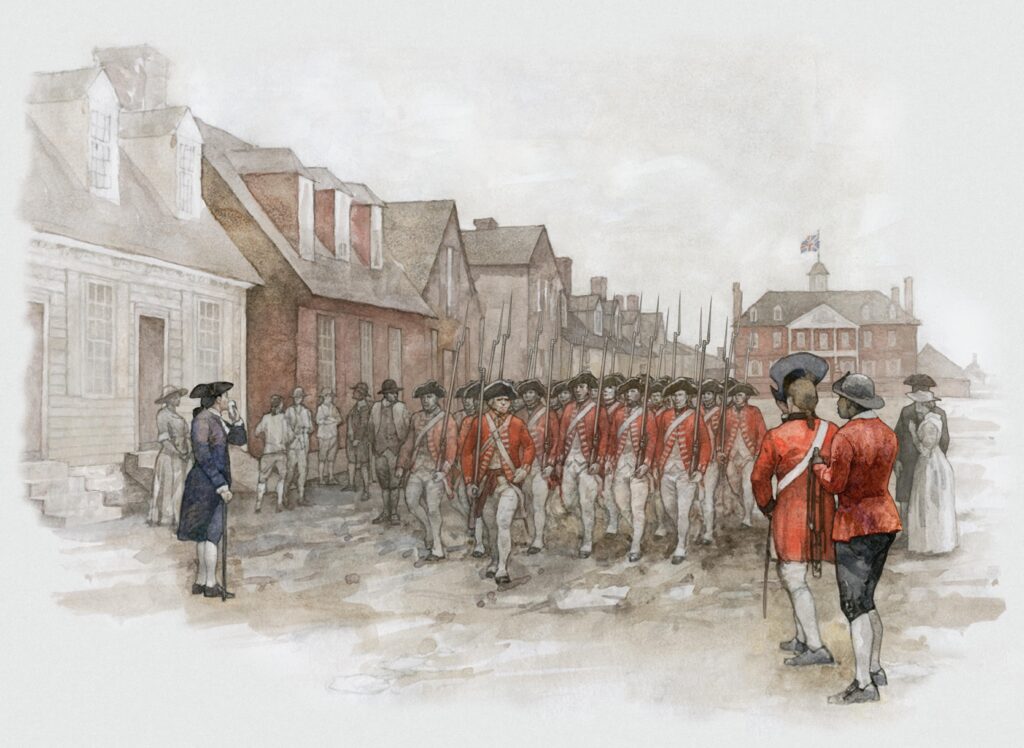
A British regiment conducting drills, marching on a street. Illustration by Wood Ronsaville Harlin, Inc. Credit: Art by Greg Harlin – Wood Ronsaville Harlin
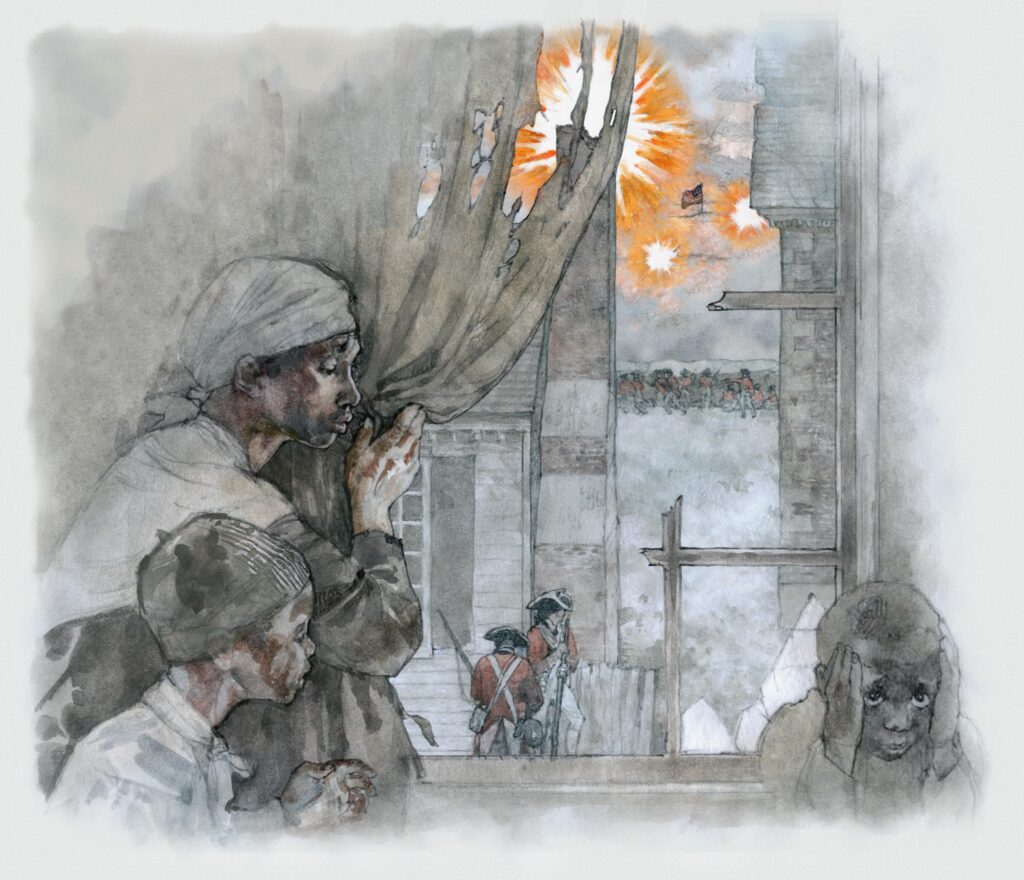
African American Stories from the Revolution. Illustration by Wood Ronsaville Harlin, Inc. Credit: Art by Greg Harlin – Wood Ronsaville Harlin

African American Stories from the Revolution. Watercolor by Wood Ronsaville Harlin. Credit: Art by Greg Harlin and Rob Wood – Wood Ronsaville Harlin
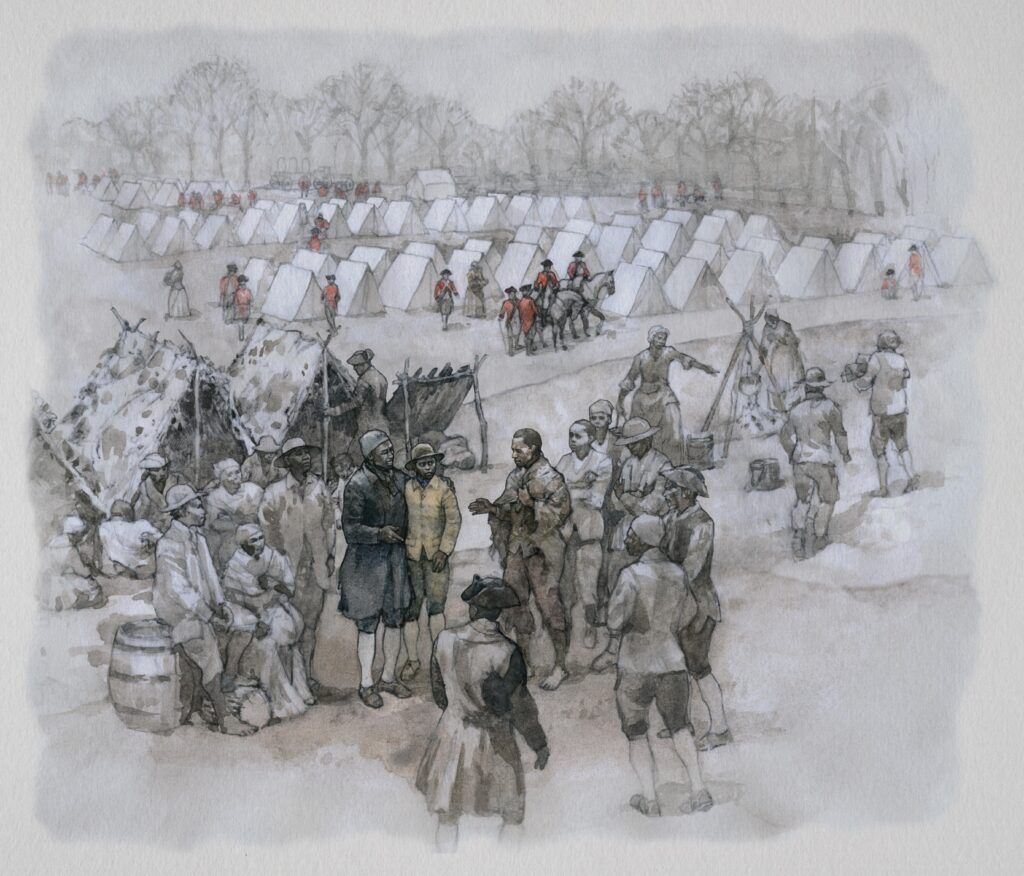
African Americans at a British camp. Illustration by Wood Ronsaville Harlin, Inc. Credit: Art by Greg Harlin – Wood Ronsaville Harlin
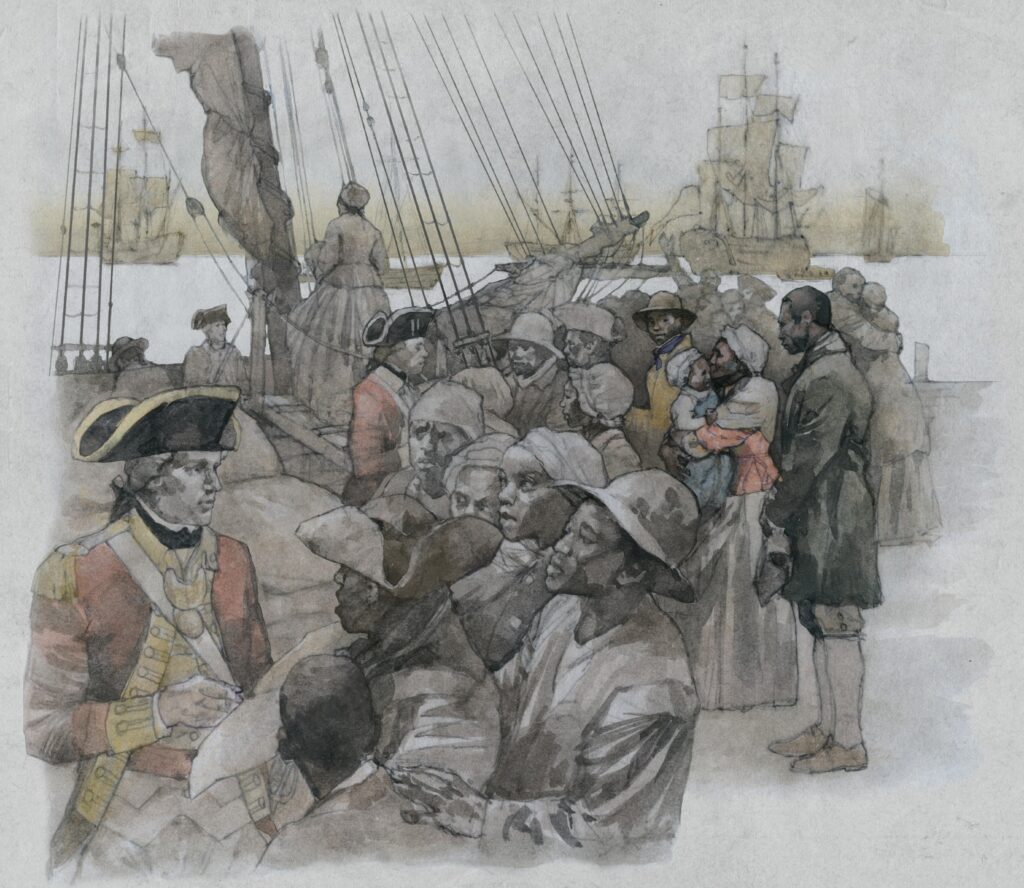
African Americans aboard a British ship. Illustration by Wood Ronsaville Harlin, Inc. Credit: Art by Greg Harlin – Wood Ronsaville Harlin

African American Stories from the Revolution. Illustration by Wood Ronsaville Harlin, Inc. Credit: Art by Greg Harlin – Wood Ronsaville Harlin
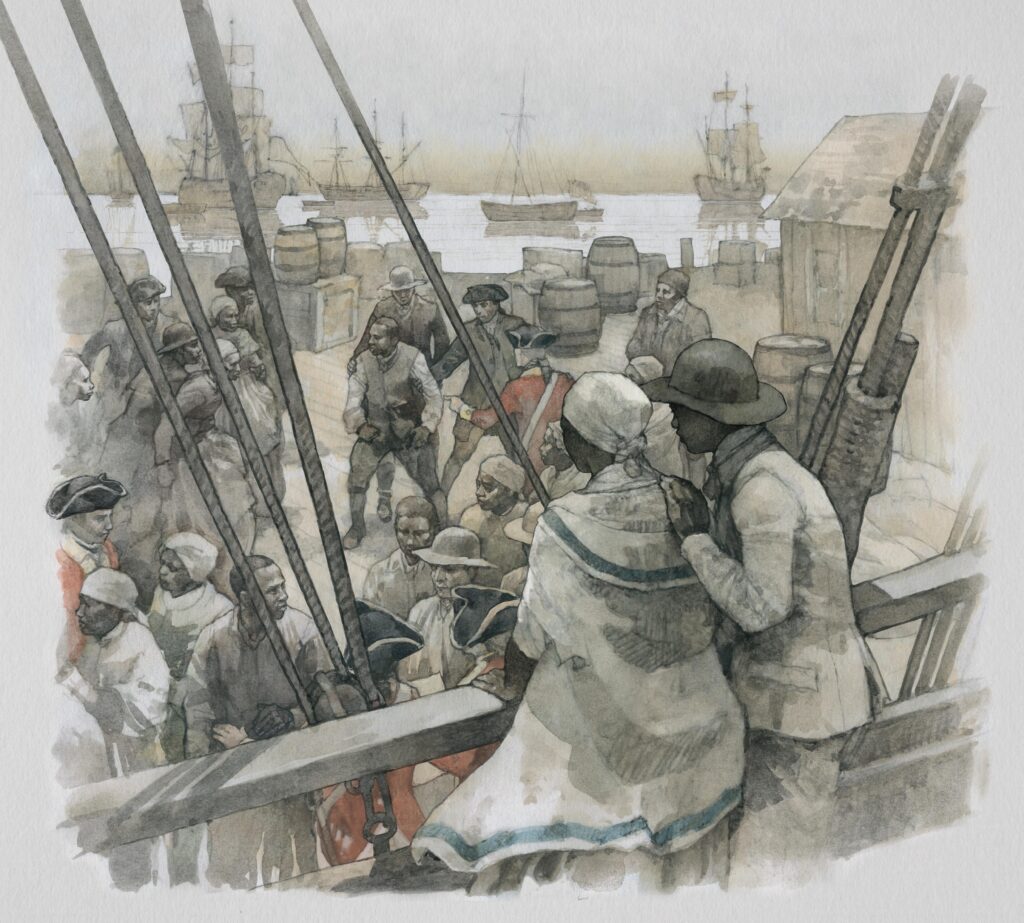
African Americans aboard a British ship. African American Stories from the Revolution. Illustration by Wood Ronsaville Harlin, Inc. Credit: Art by Greg Harlin – Wood Ronsaville Harlin

African American Stories from the Revolution. Illustration by Wood Ronsaville Harlin, Inc. Credit: Art by Greg Harlin – Wood Ronsaville Harlin
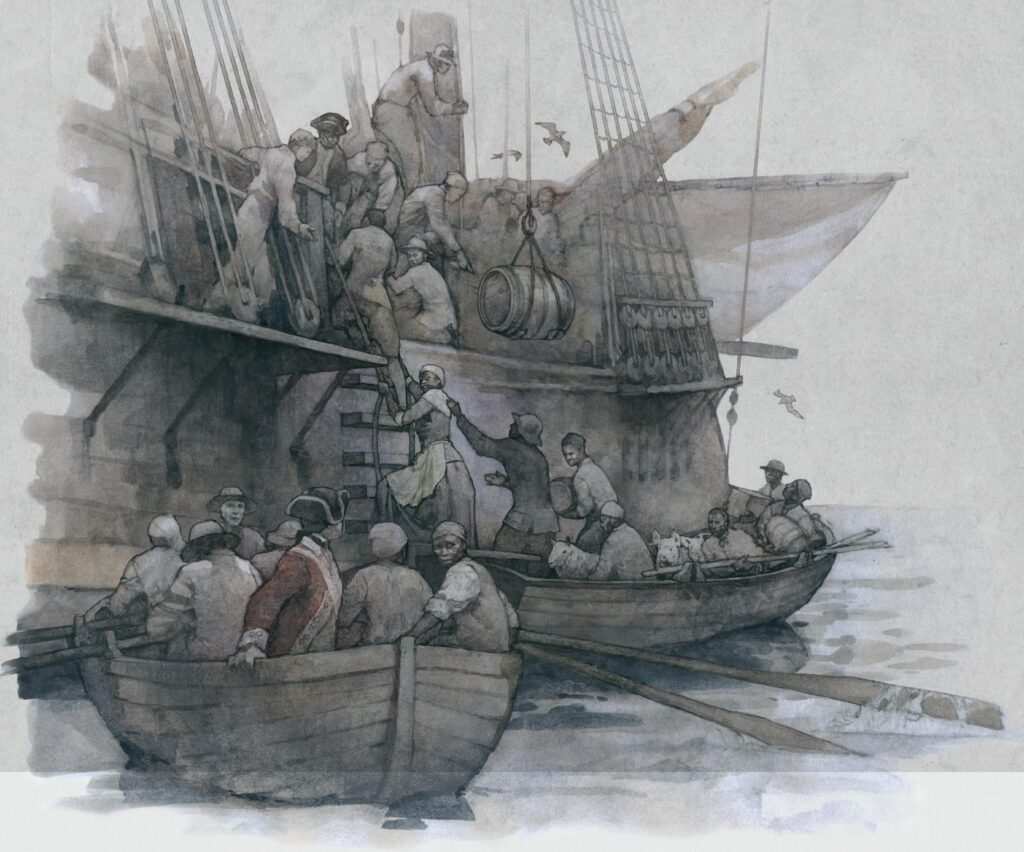
African American Stories from the Revolution. Illustration by Wood Ronsaville Harlin, Inc. Credit: Art by Greg Harlin – Wood Ronsaville Harlin
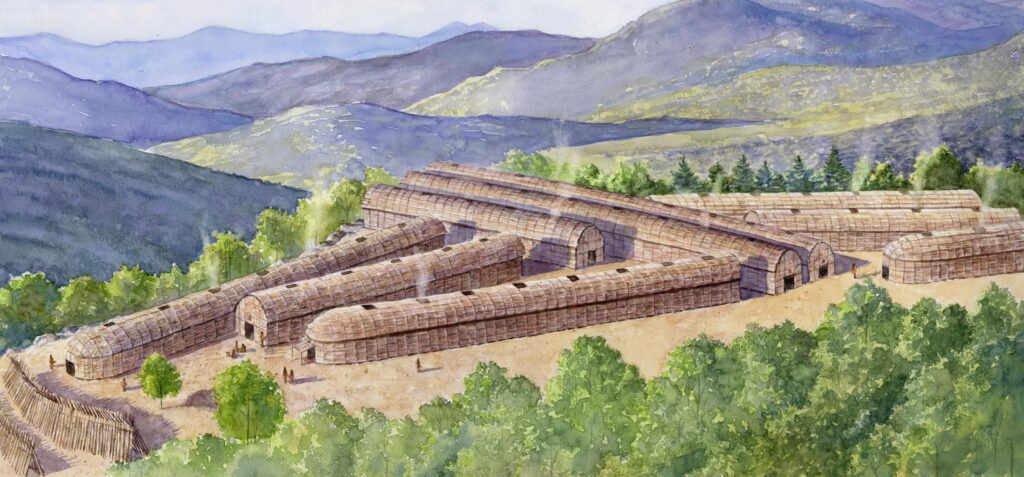
Mohawk Village Garoga. Illustration by Wood Ronsaville Harlin, Inc. Credit: Art by Rob Wood – Wood Ronsaville Harlin

Boston Tea Party. Illustration by Wood Ronsaville Harlin, Inc. Credit: Art by Greg Harlin and Rob Wood – Wood Ronsaville Harlin
Event Participation Survey
If you are hosting a screening event, please consider sharing this Event Participation Survey with your audience. This survey will help us improve development of future engagement programming. Thank you!